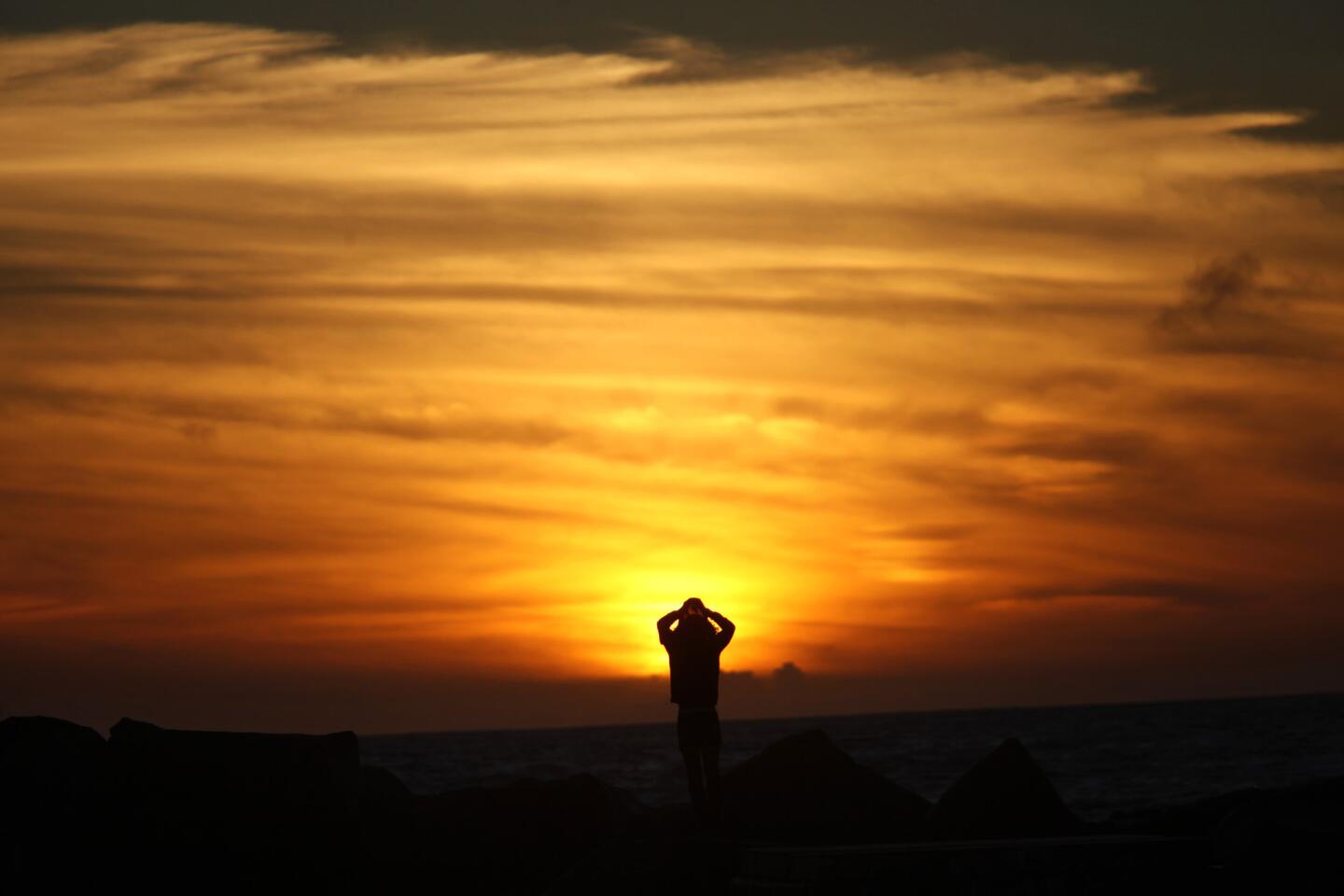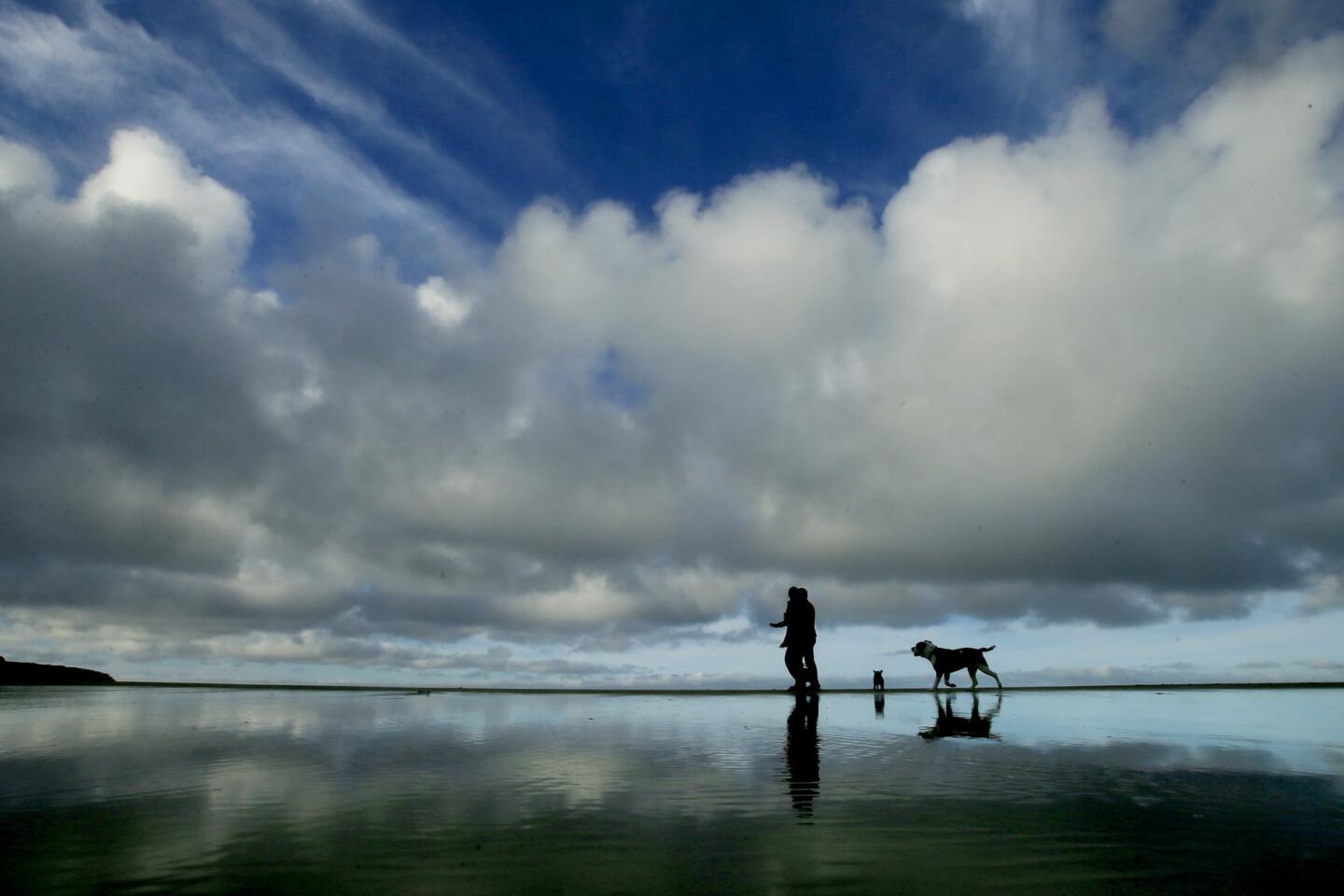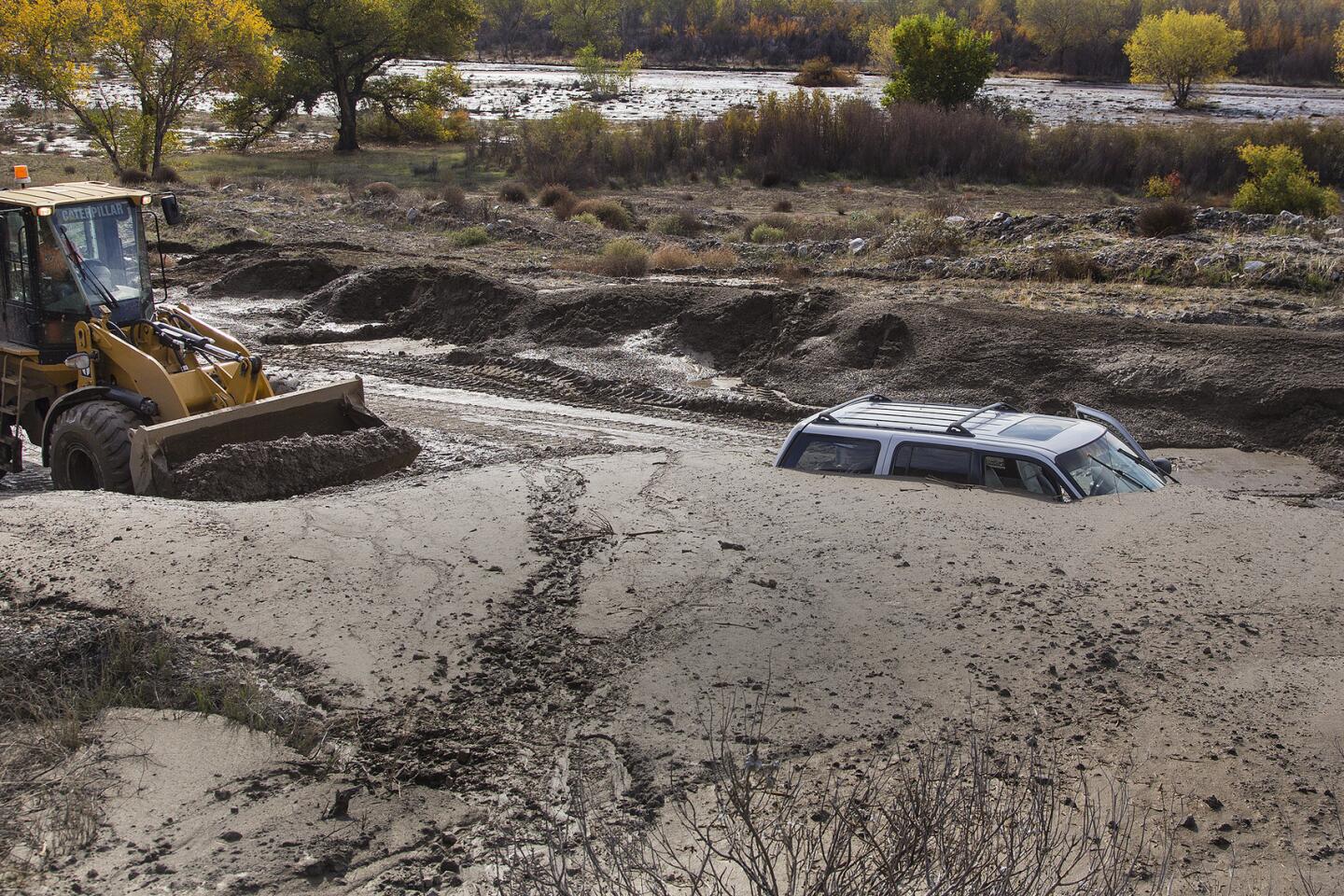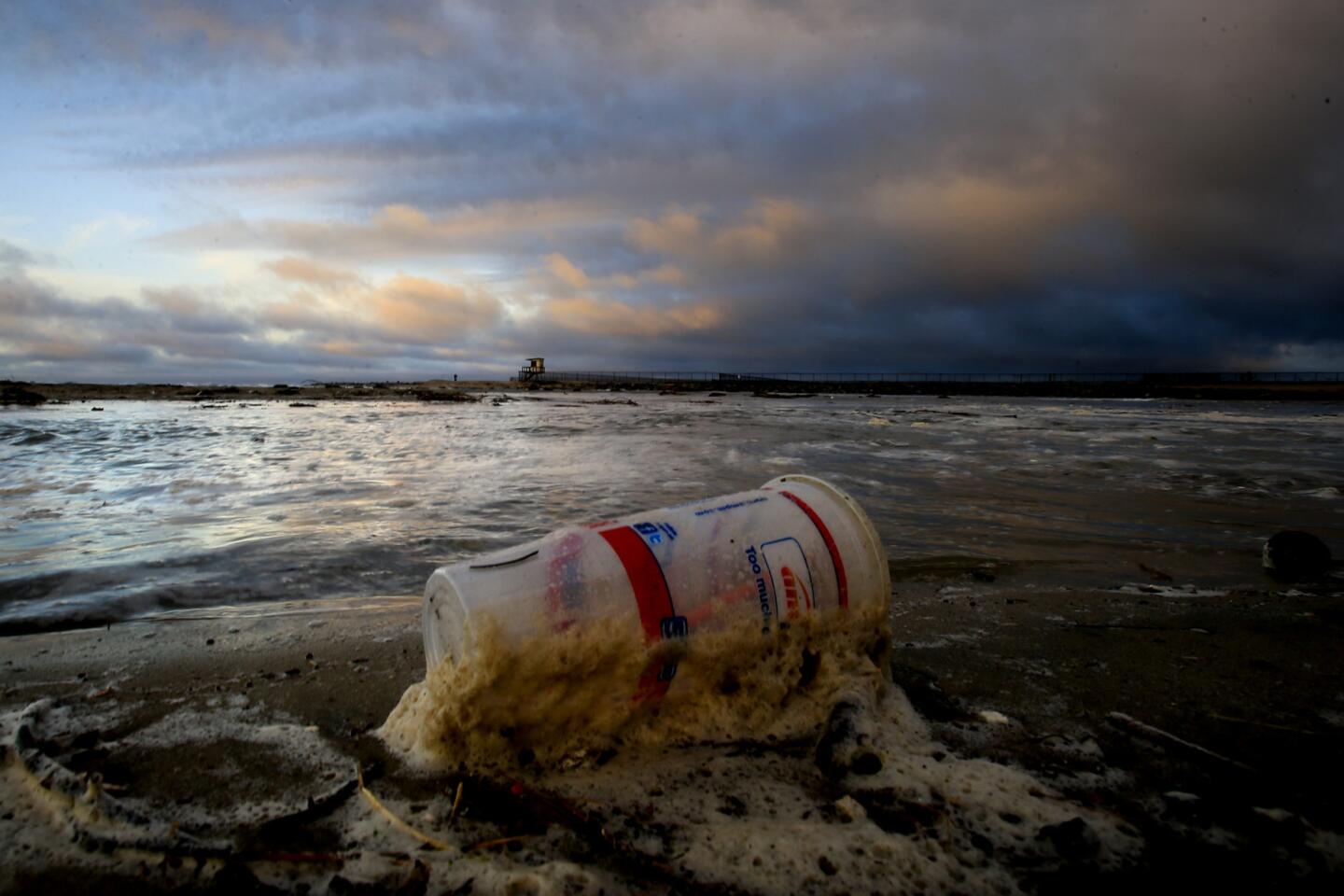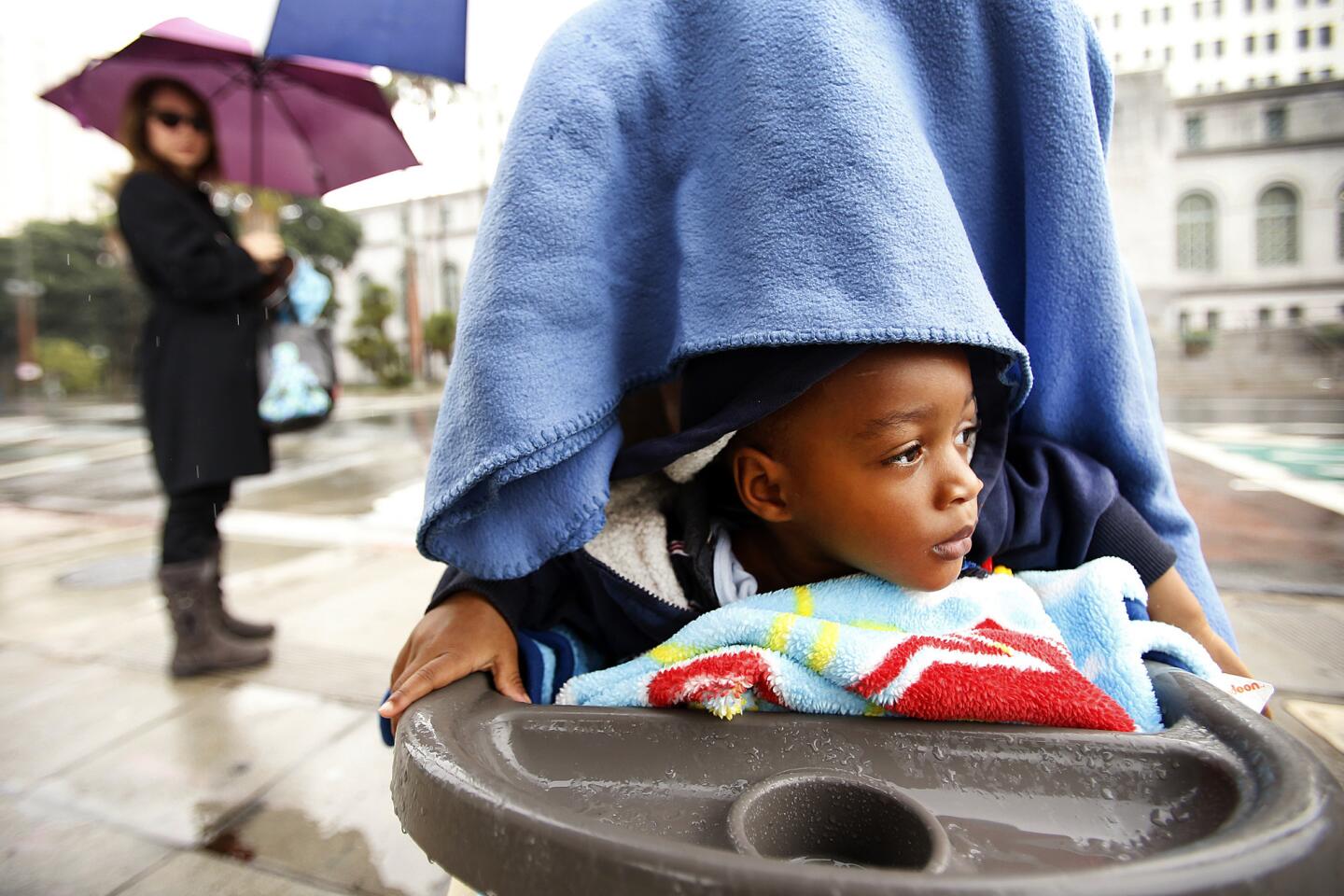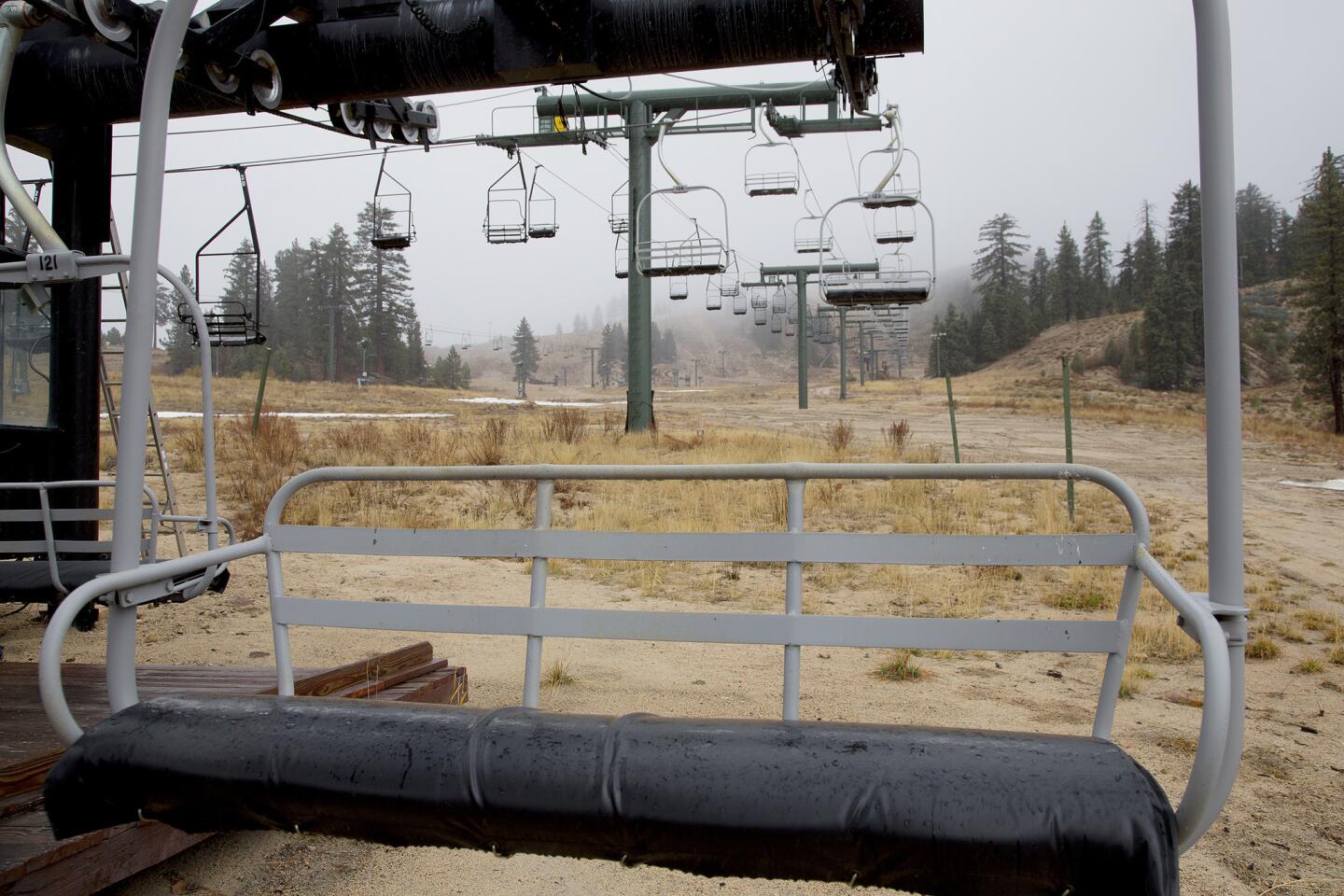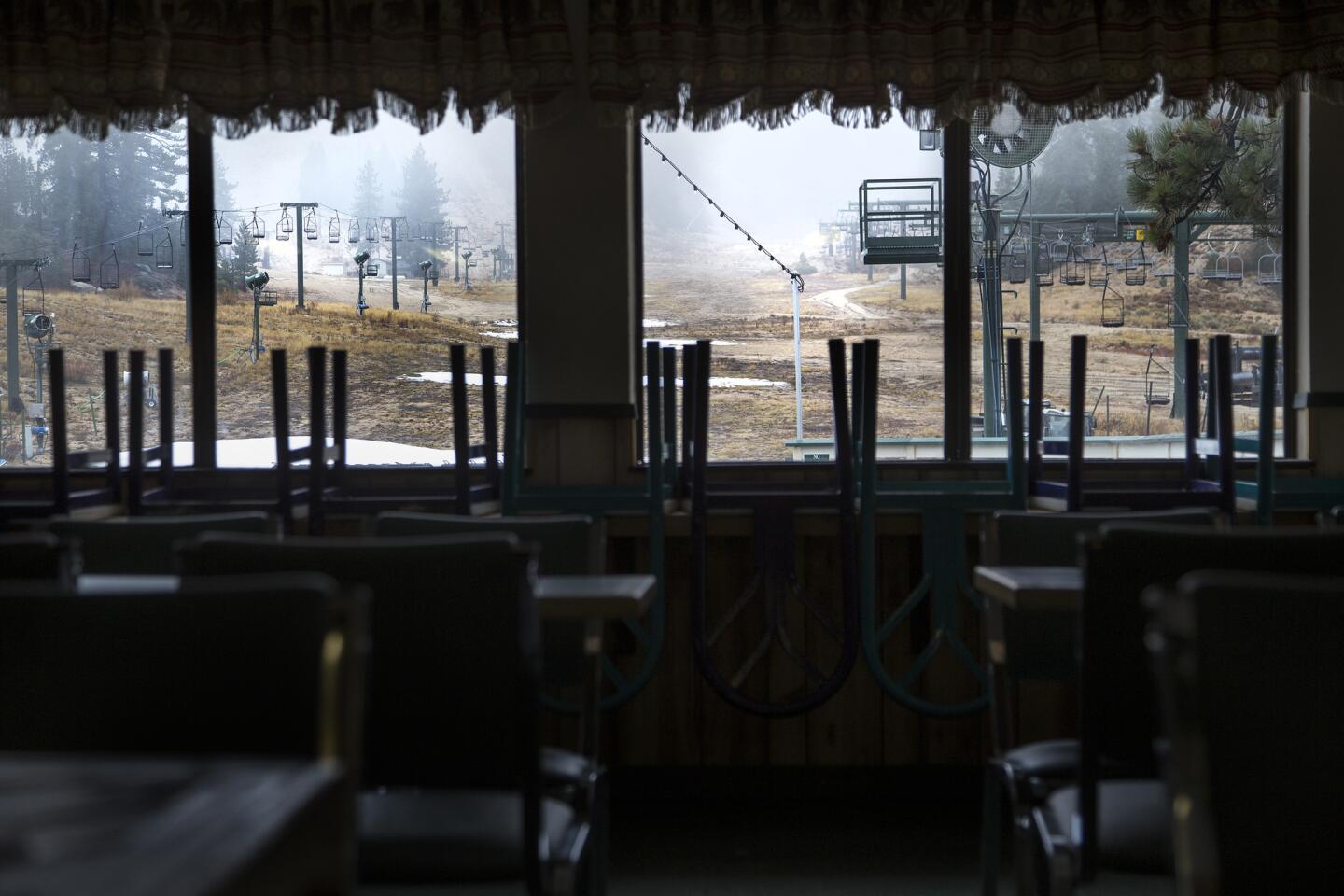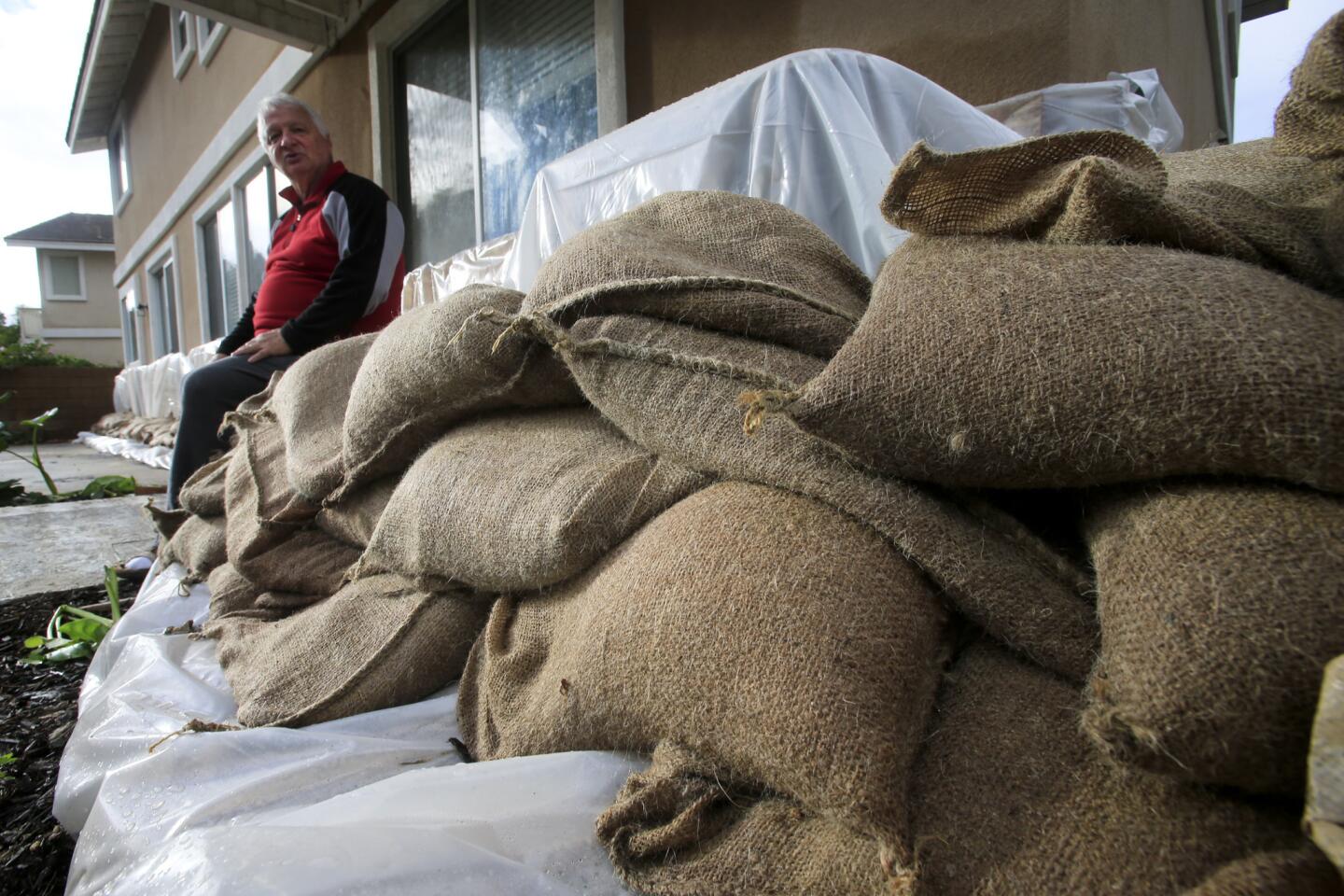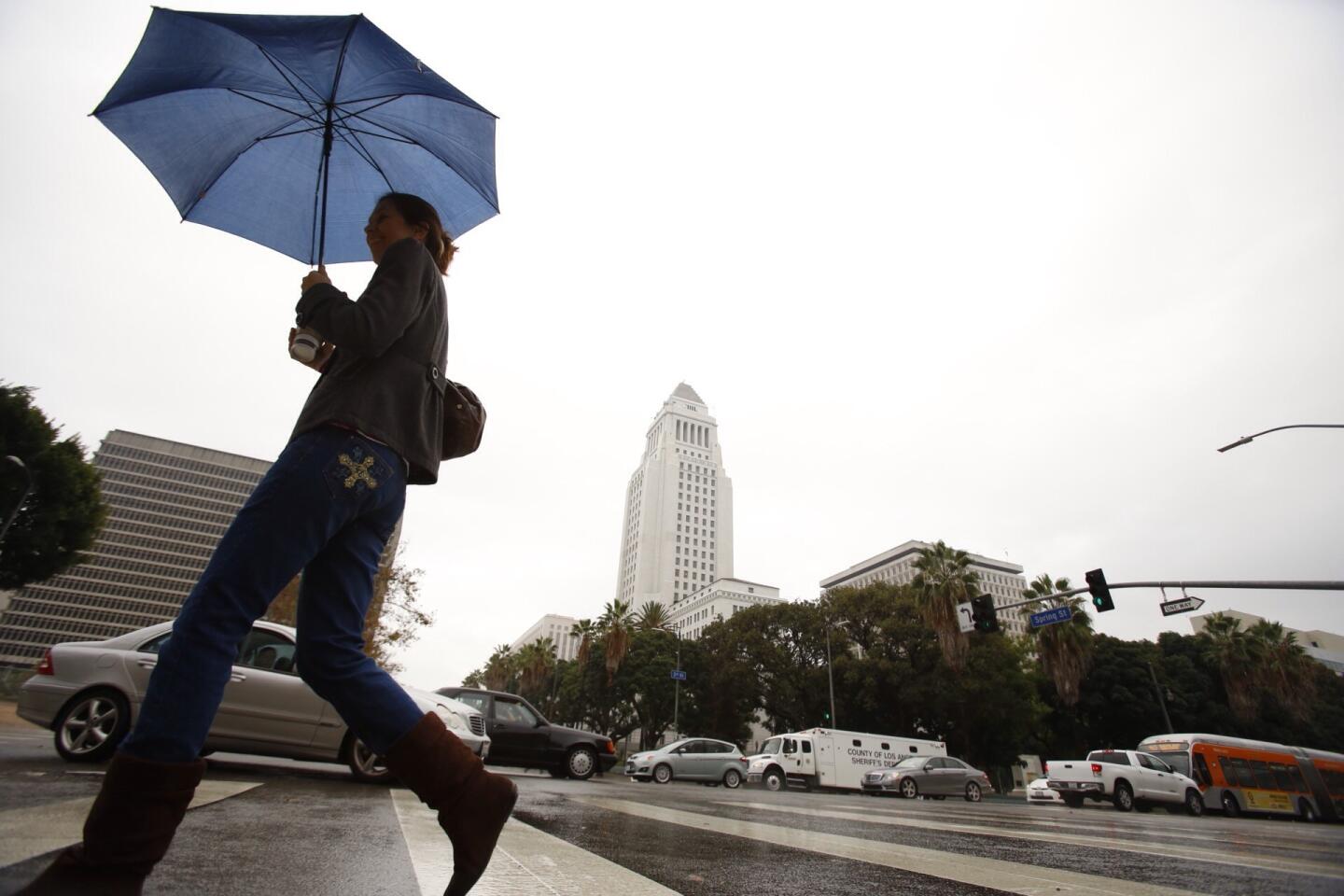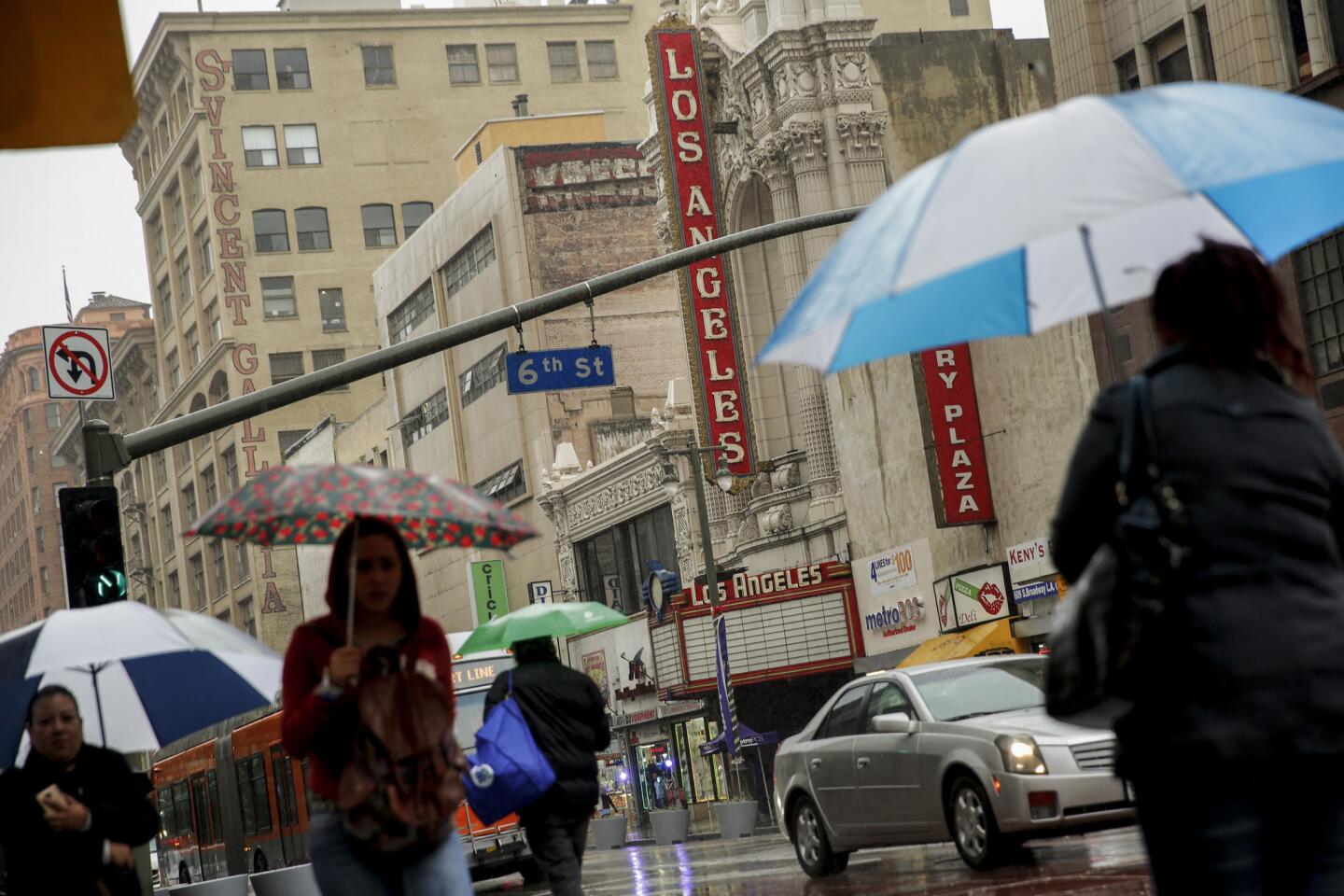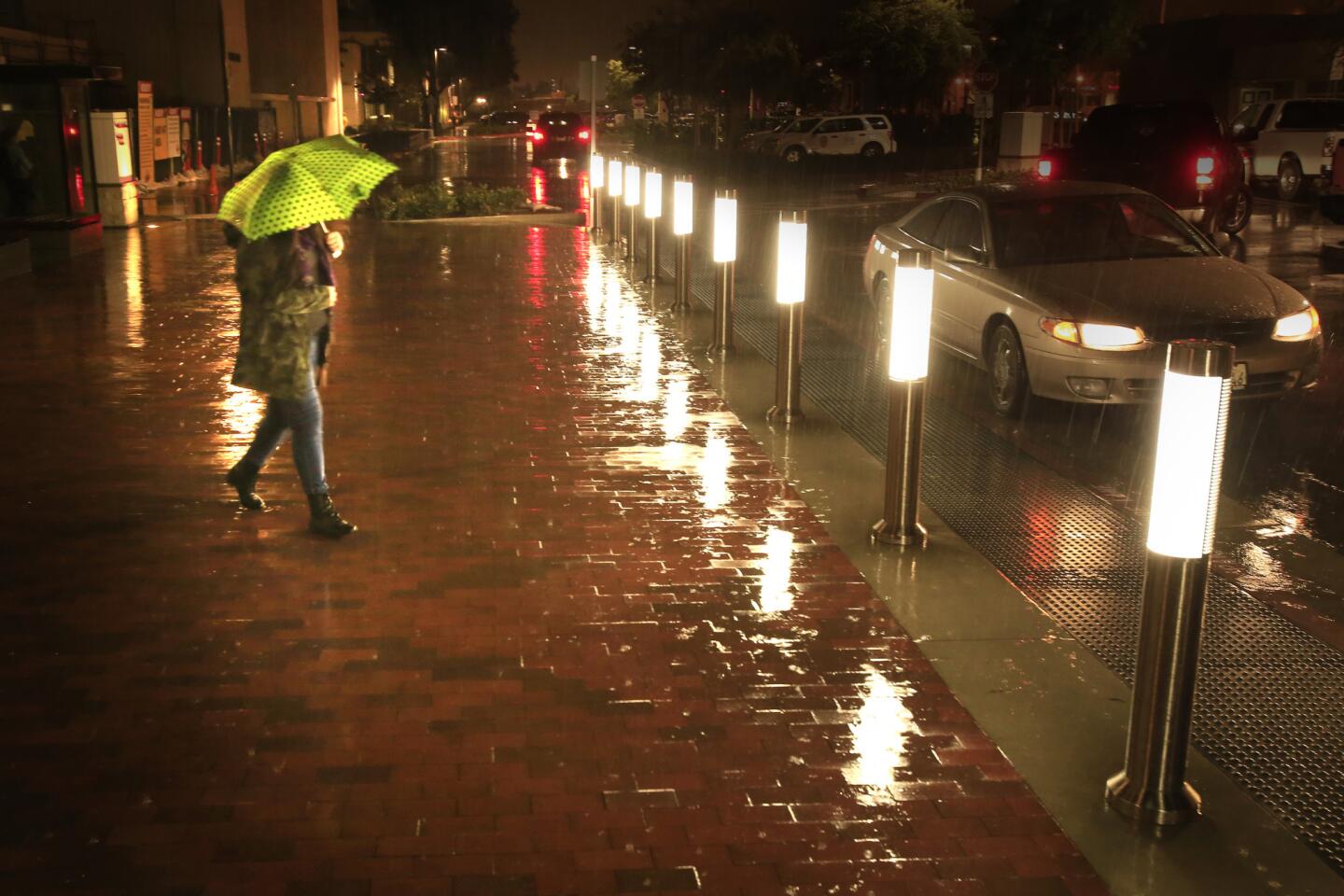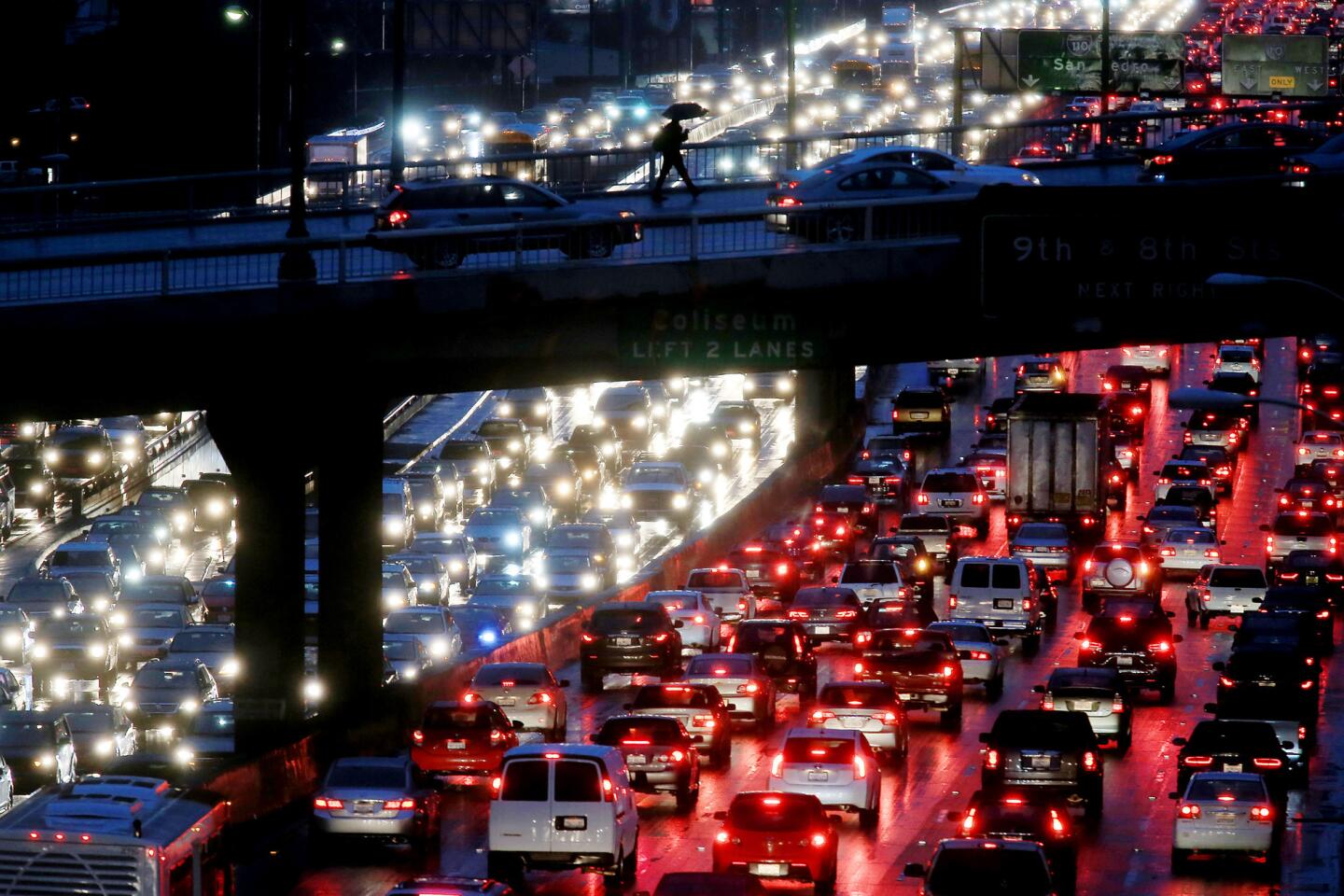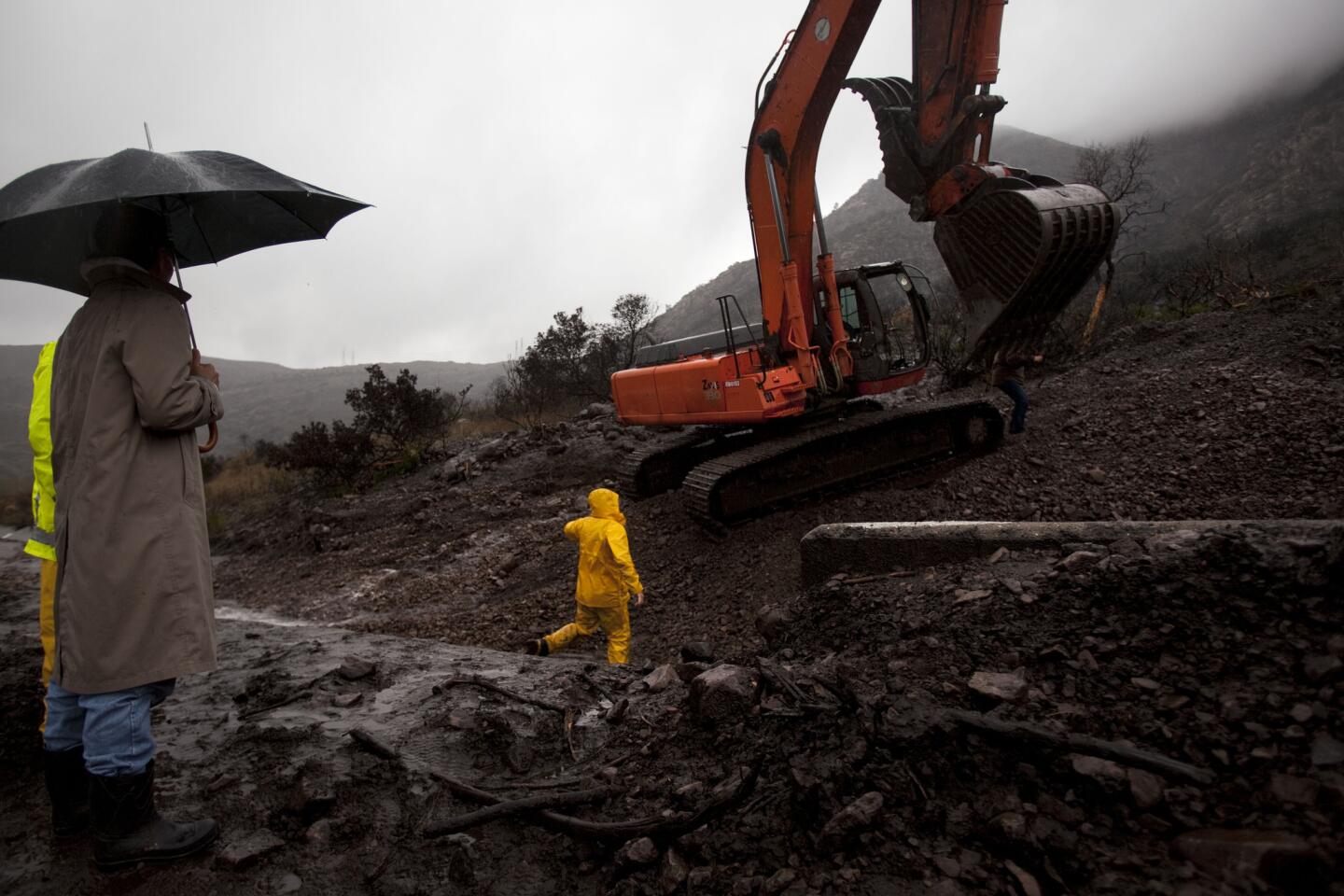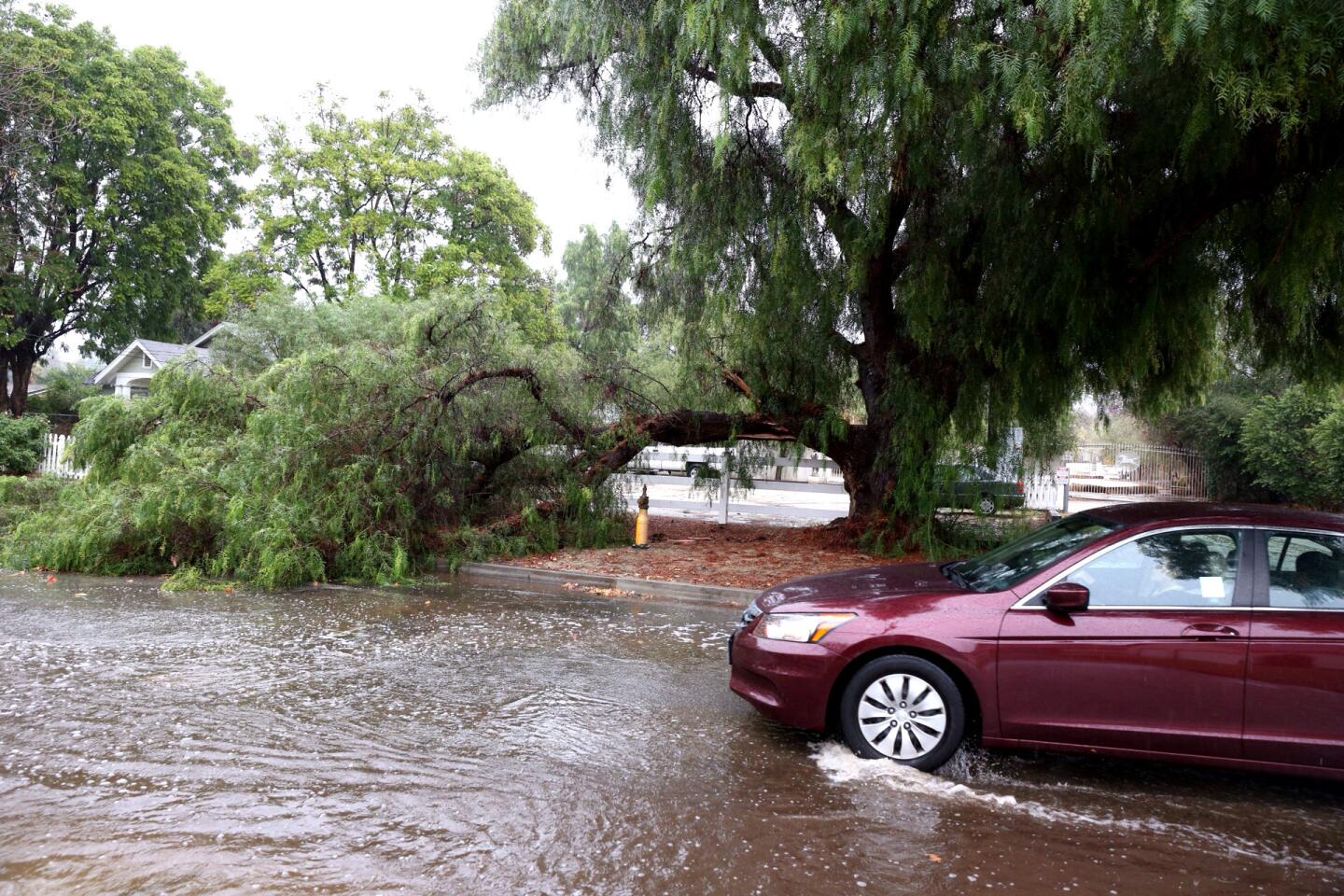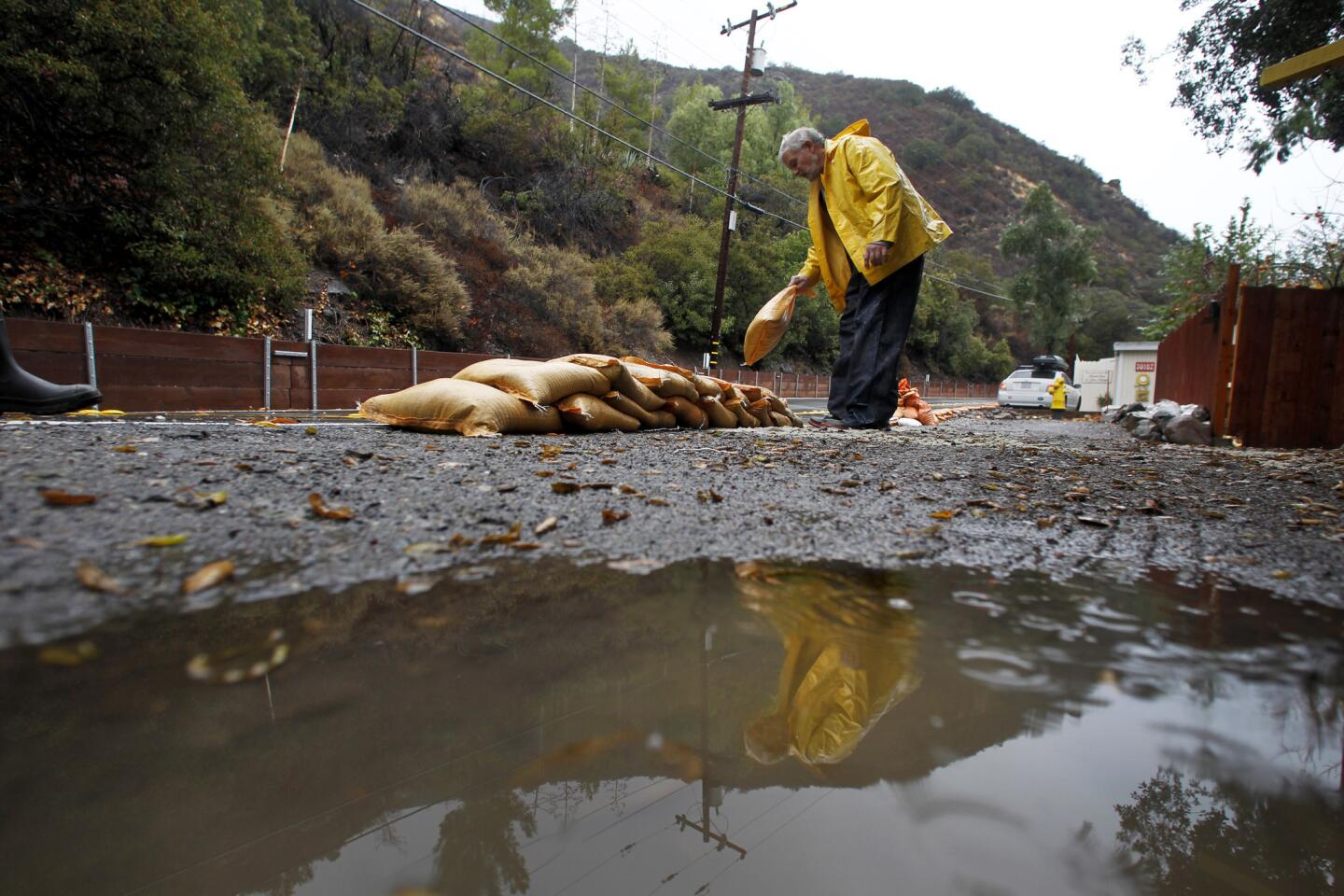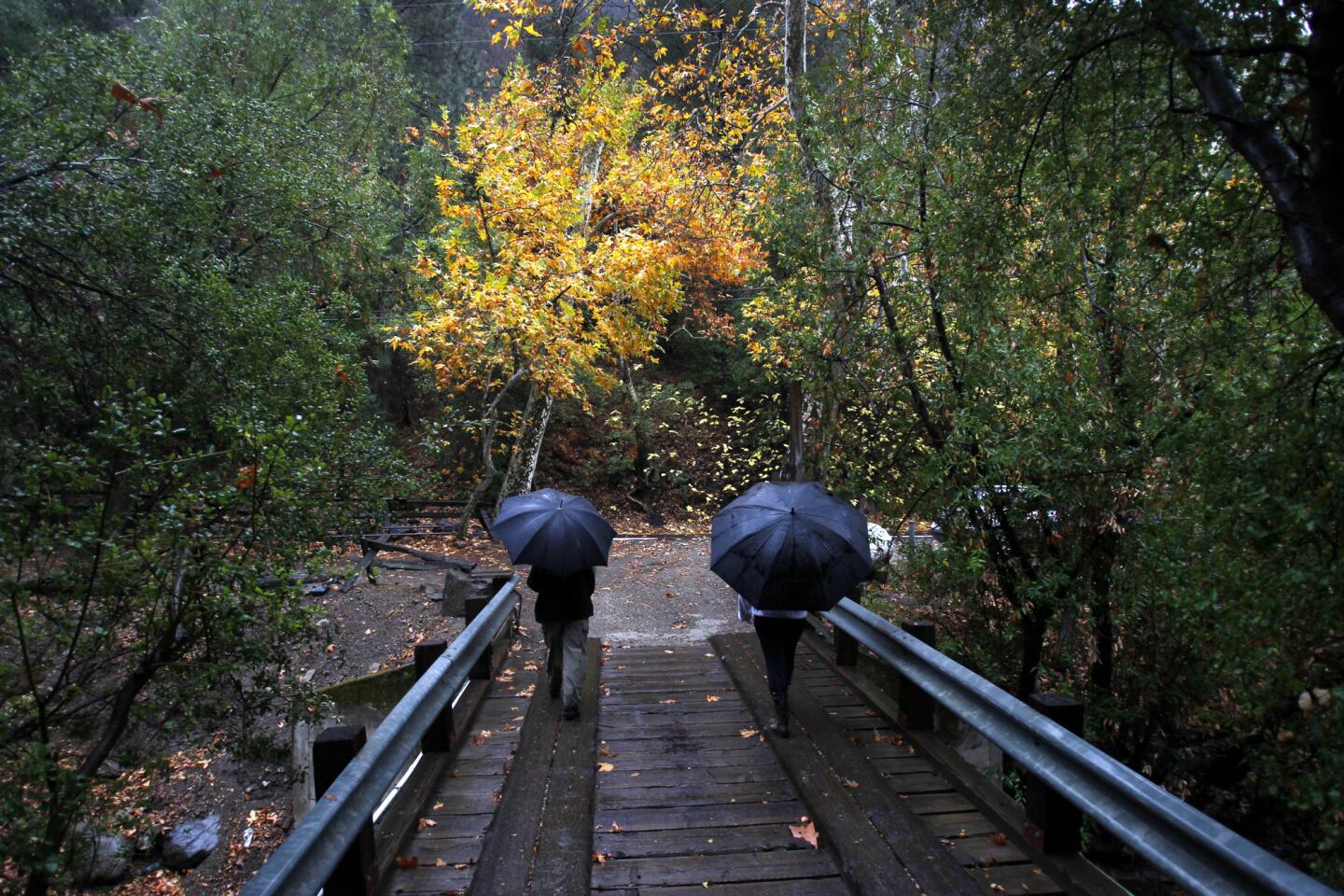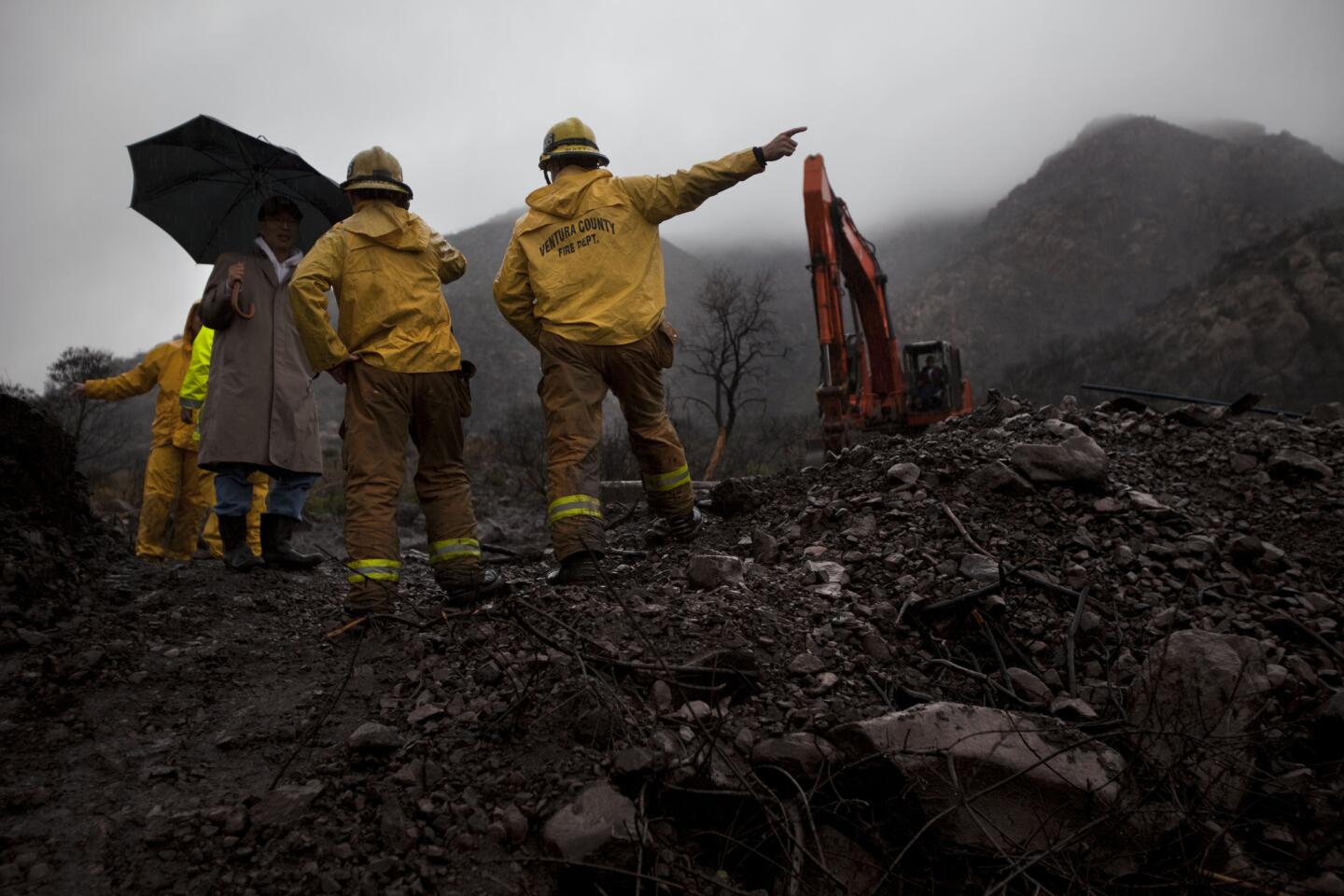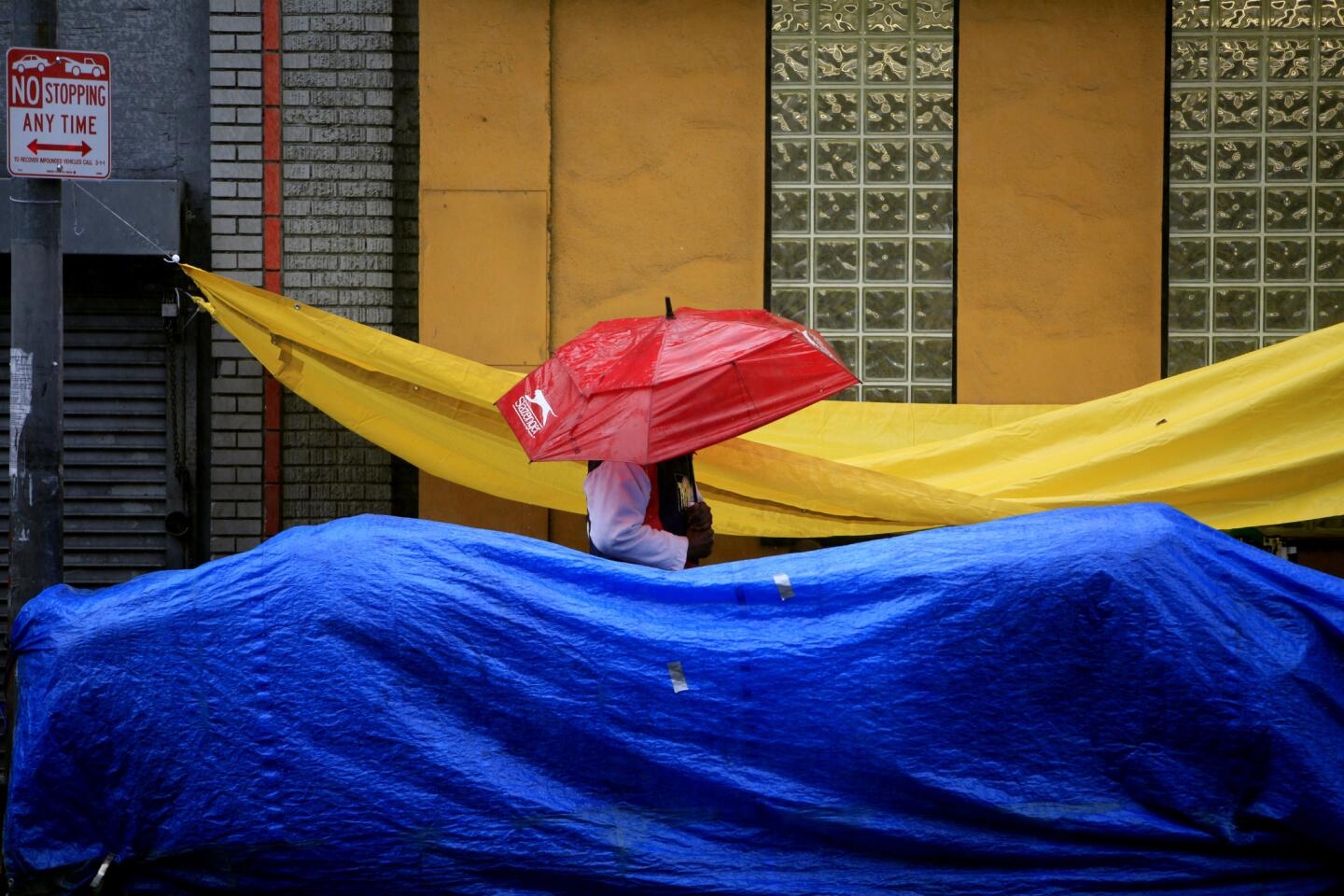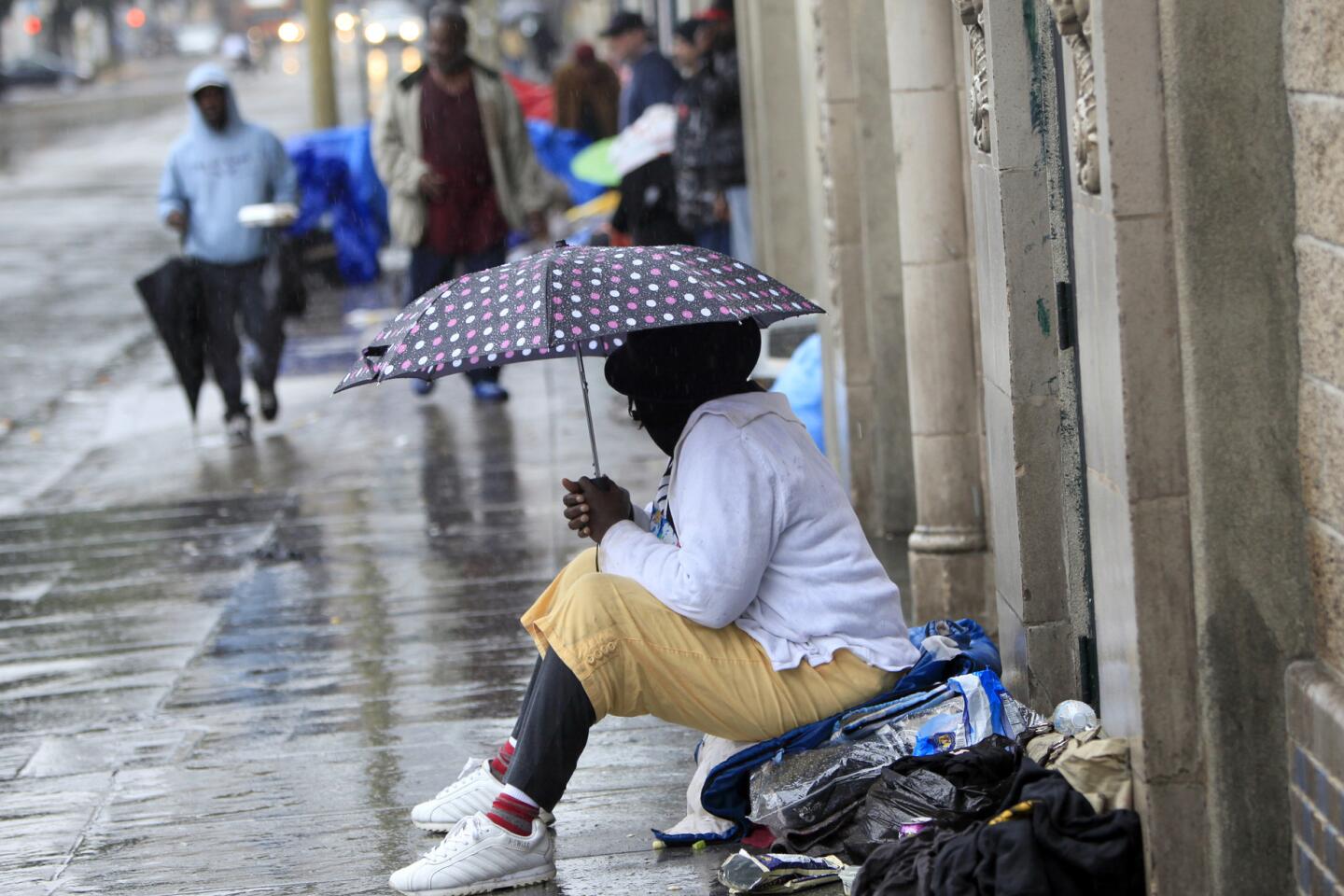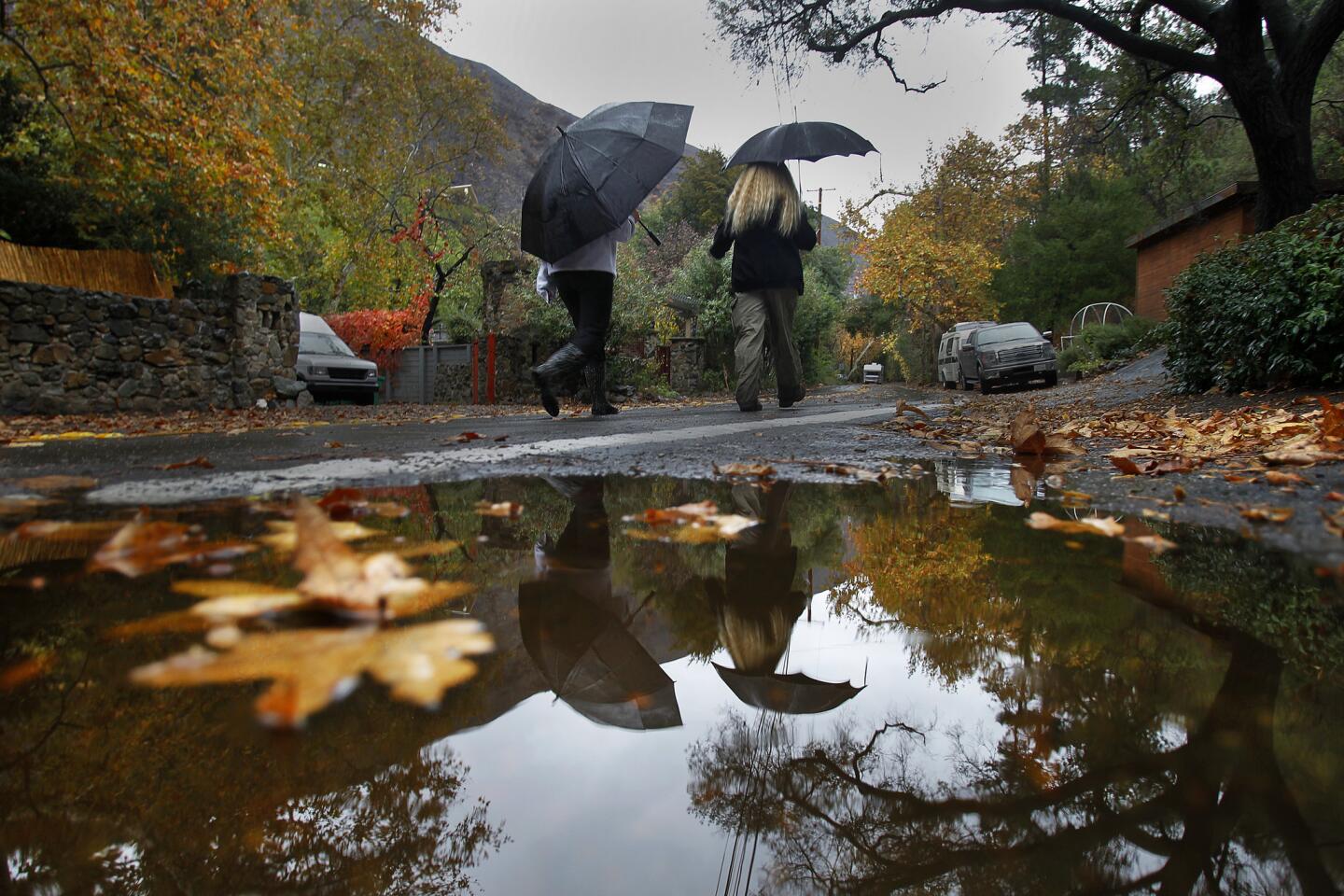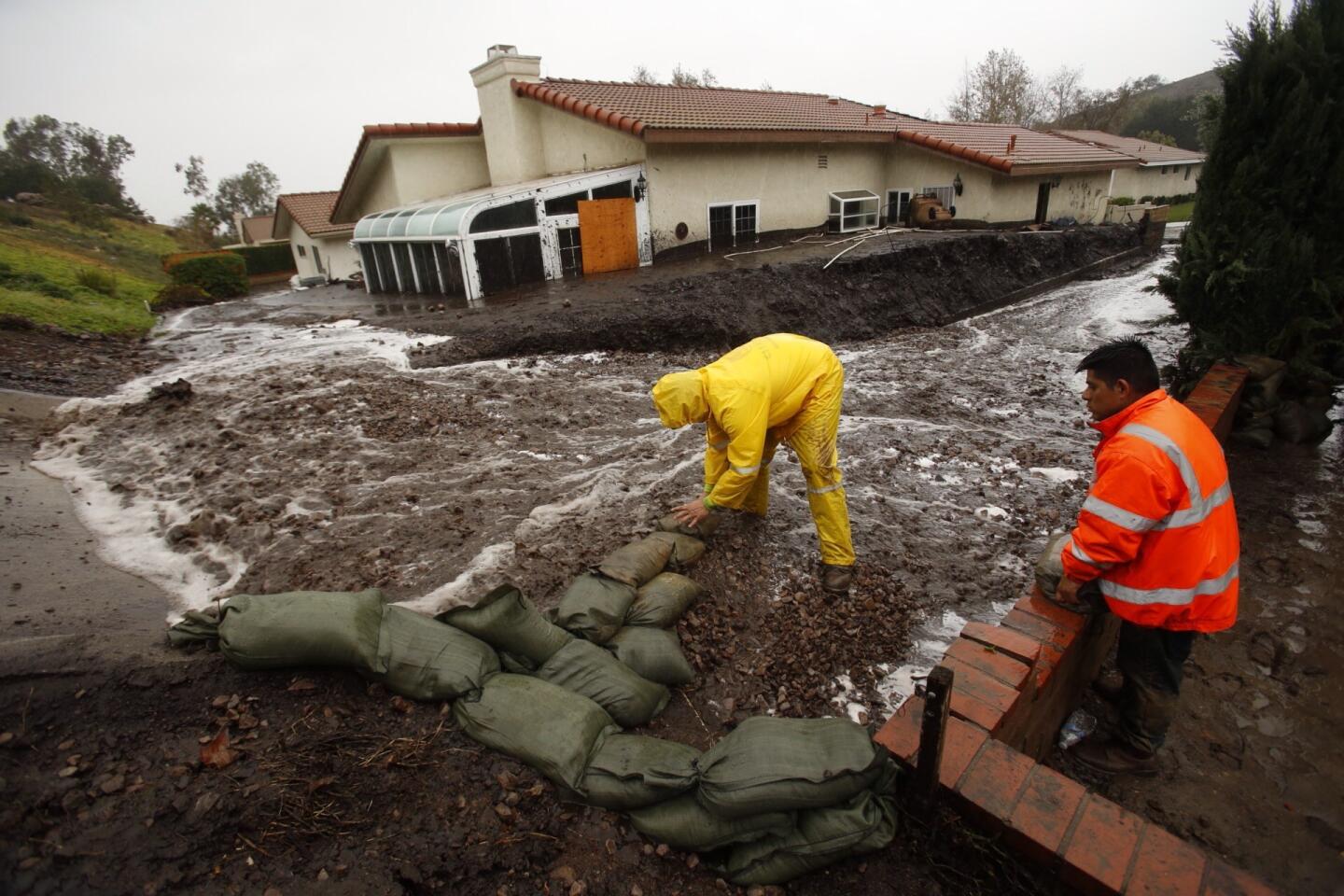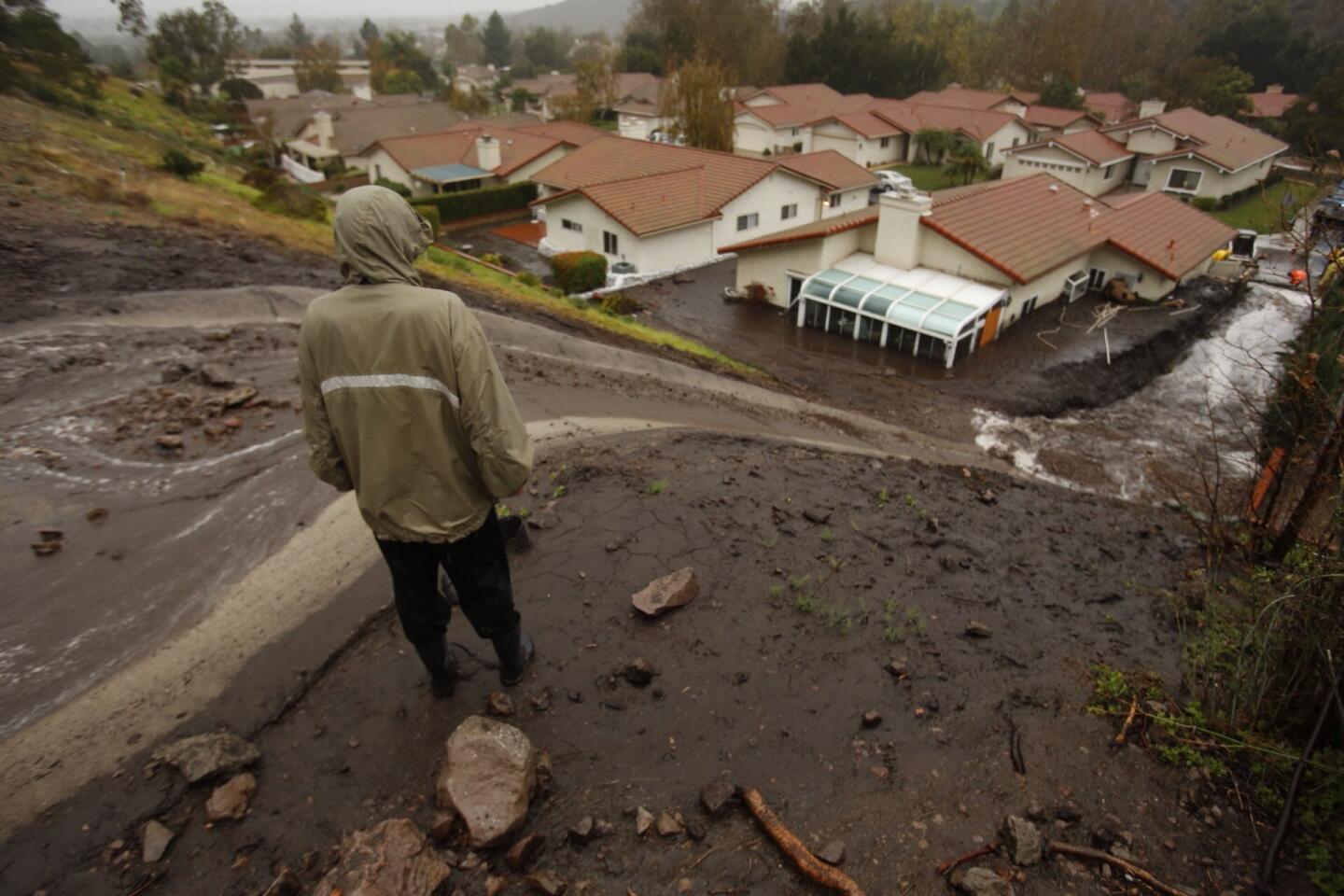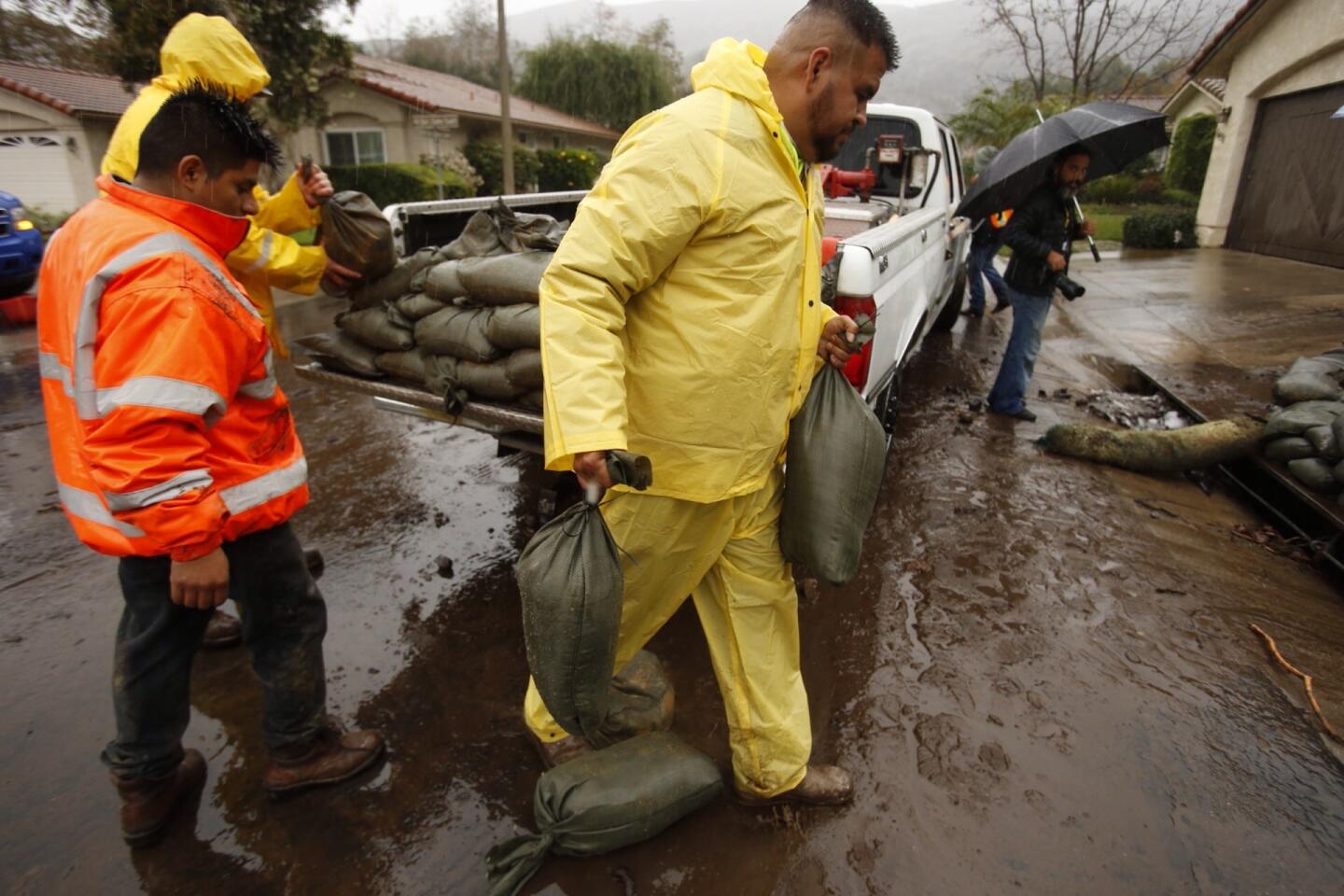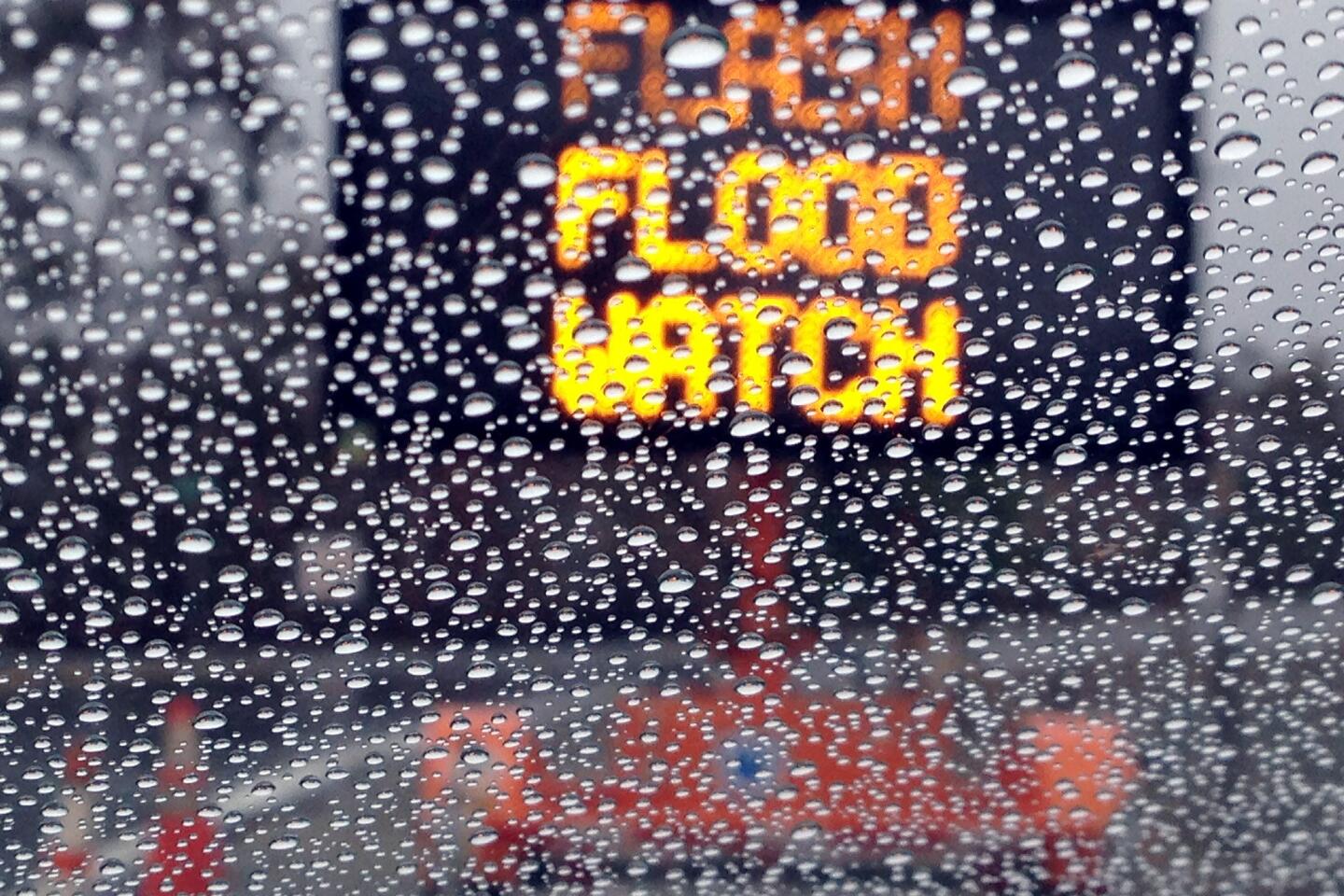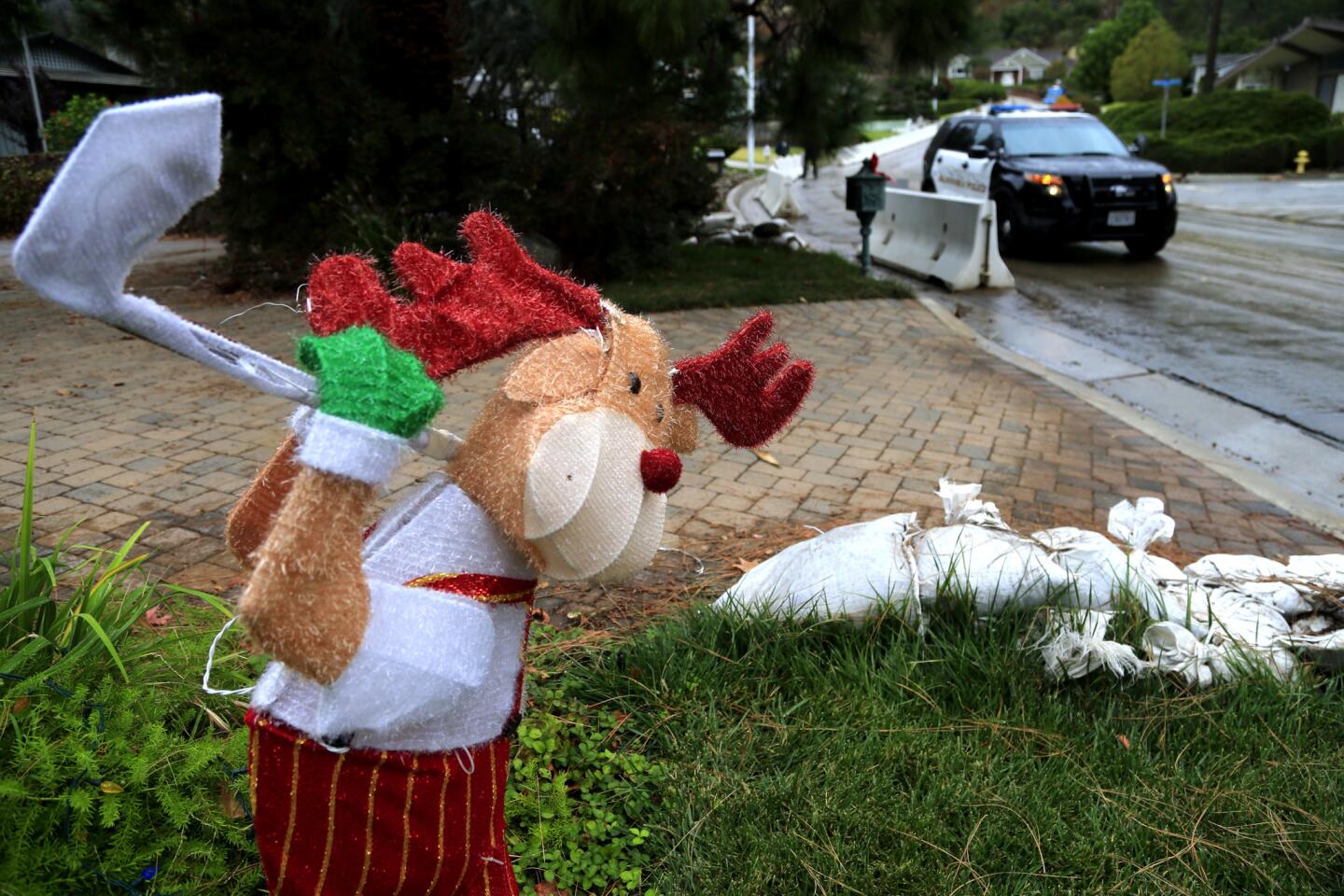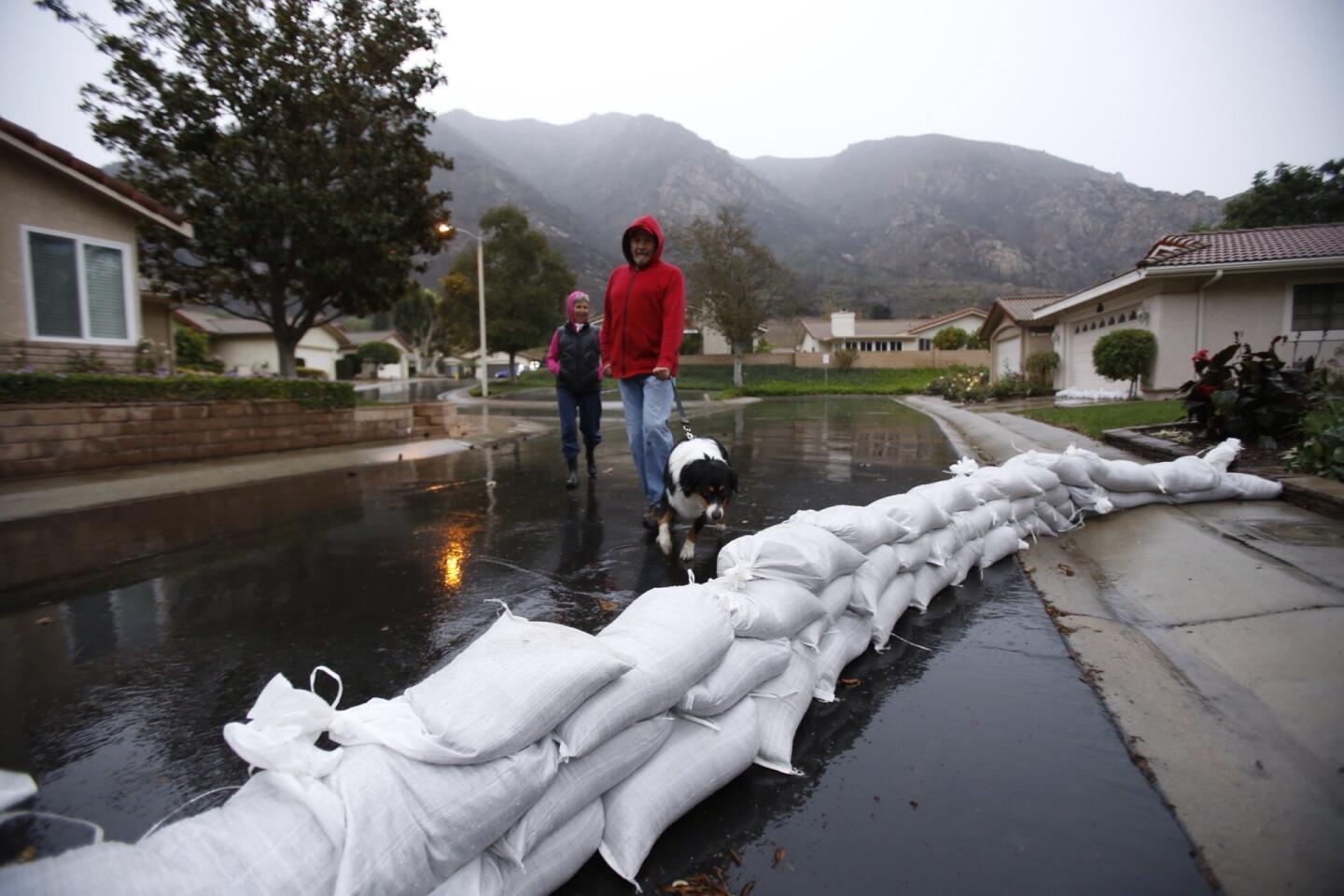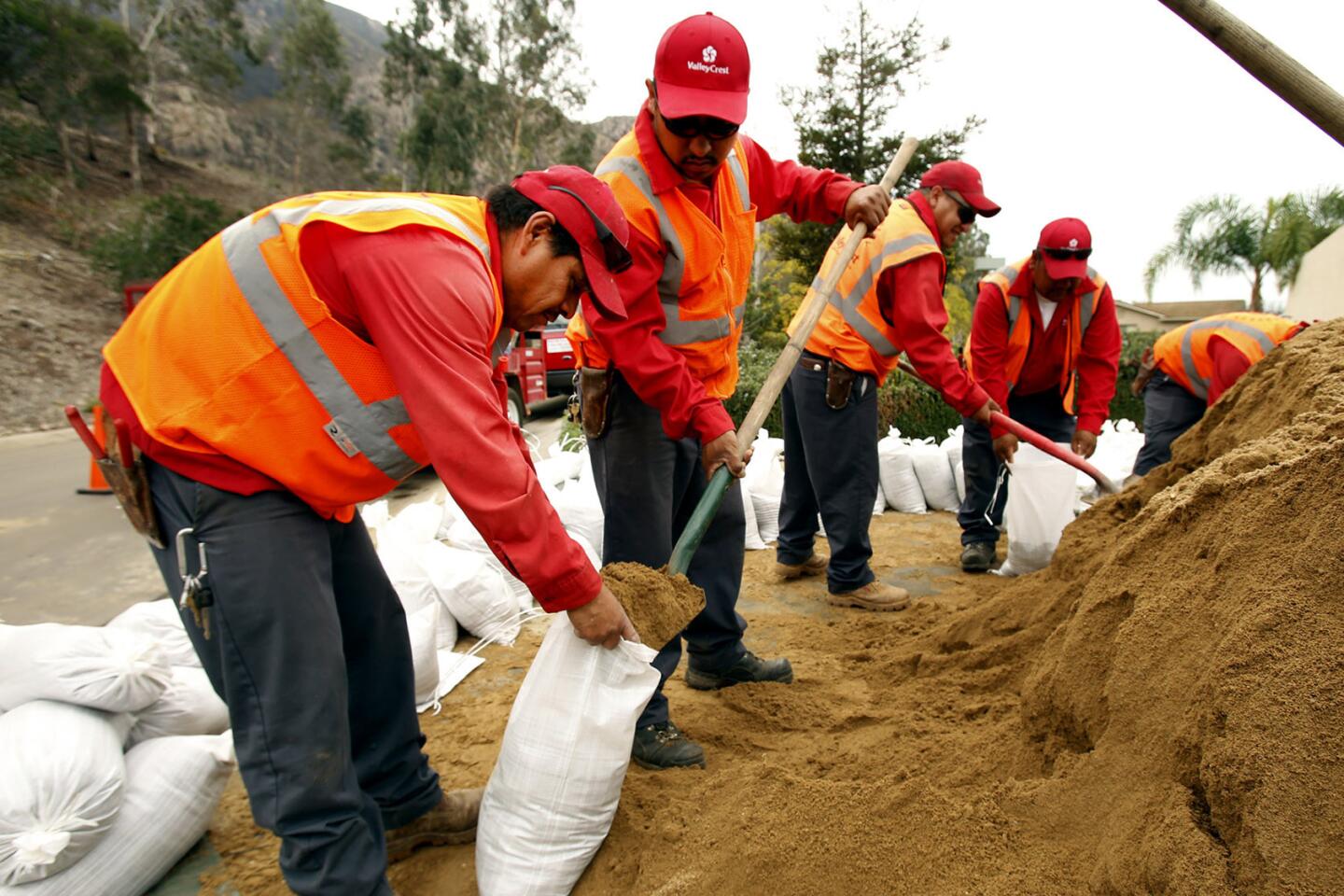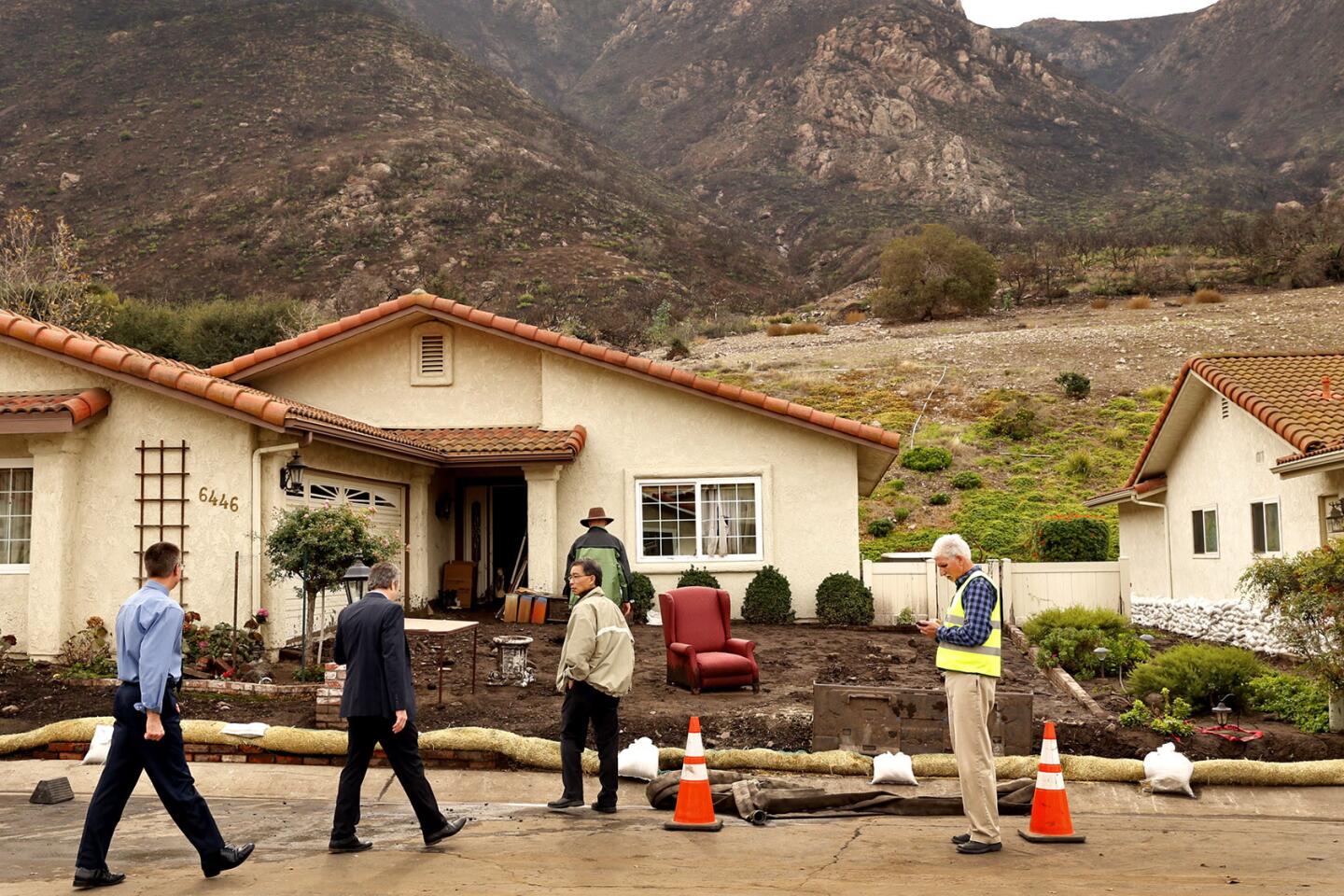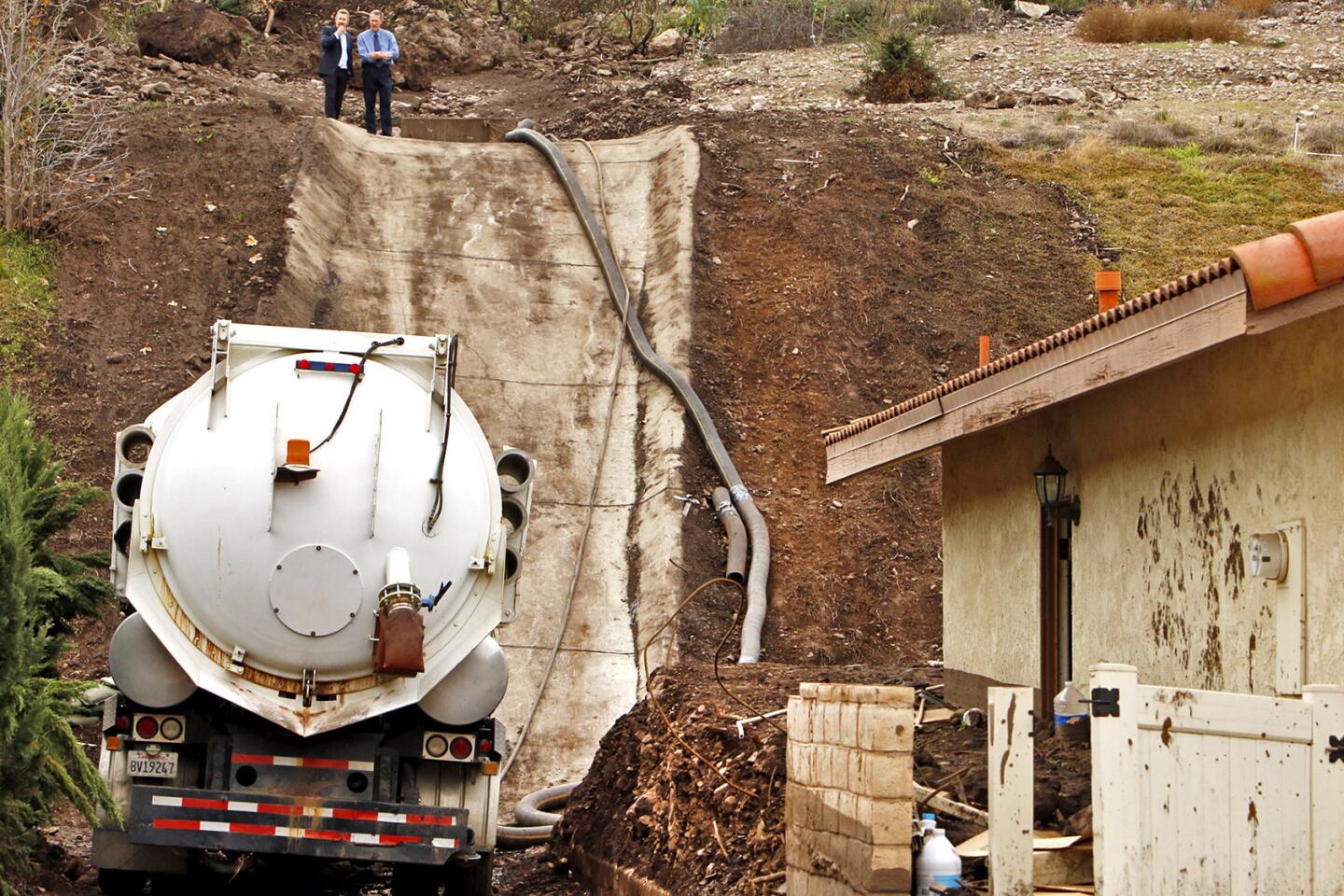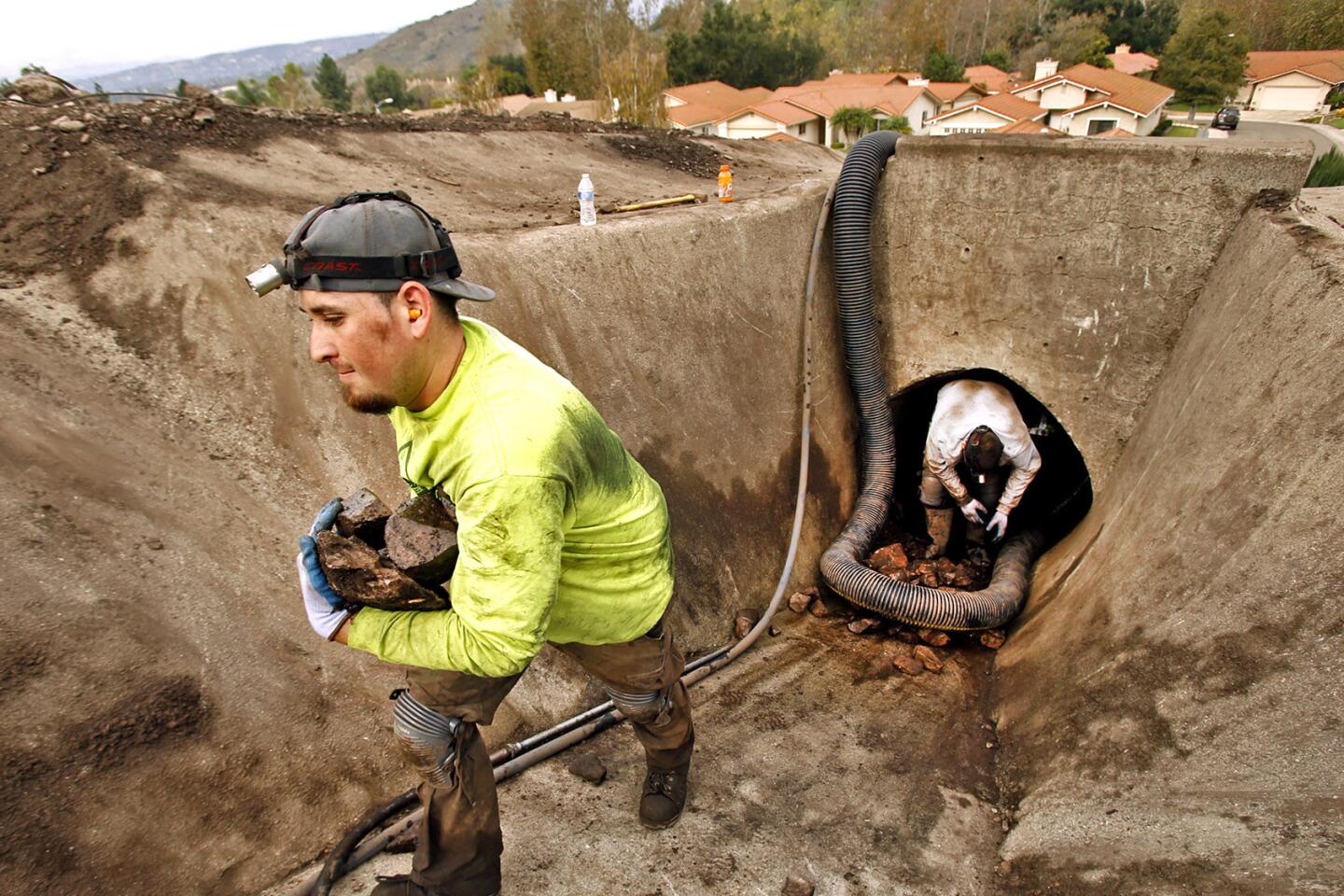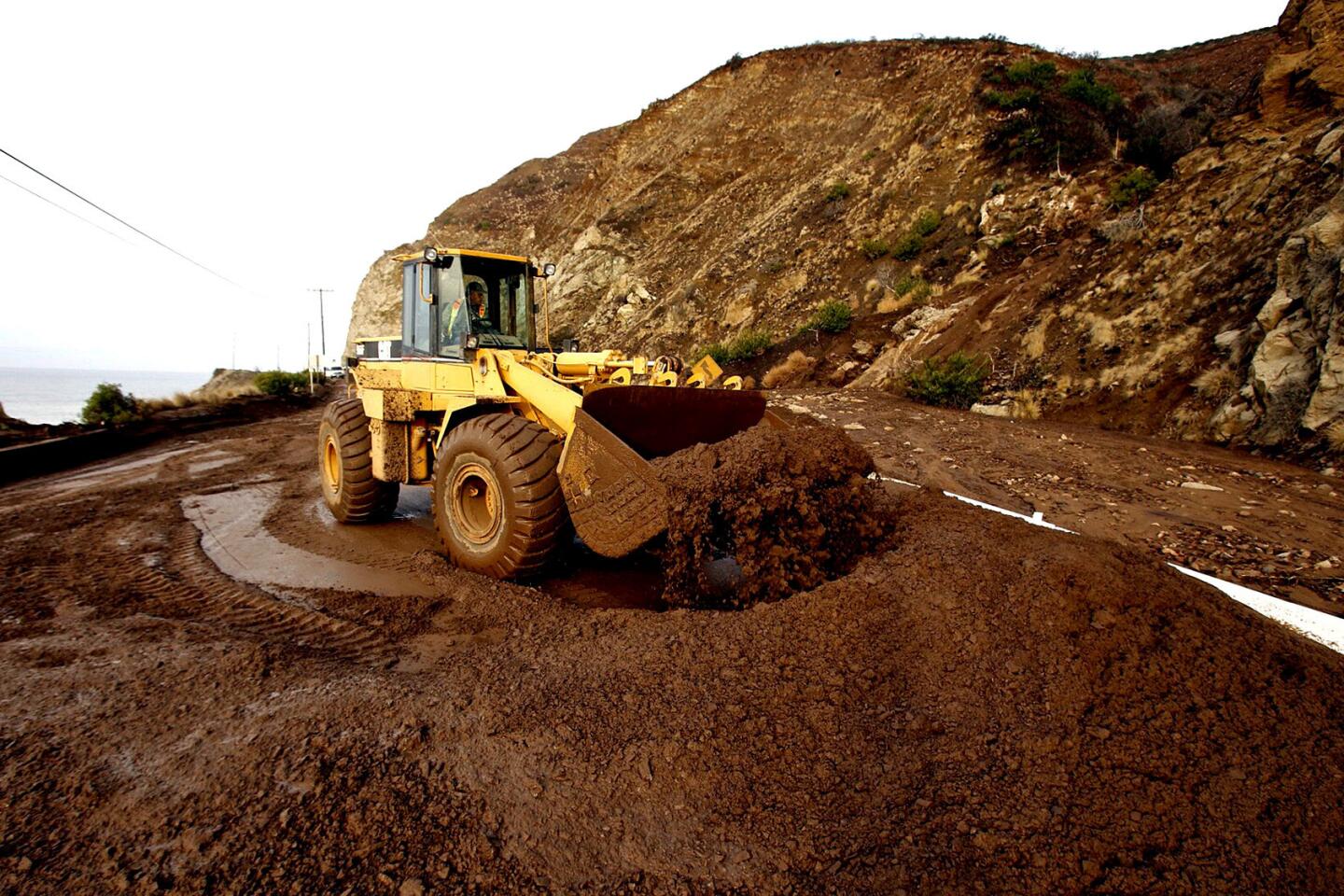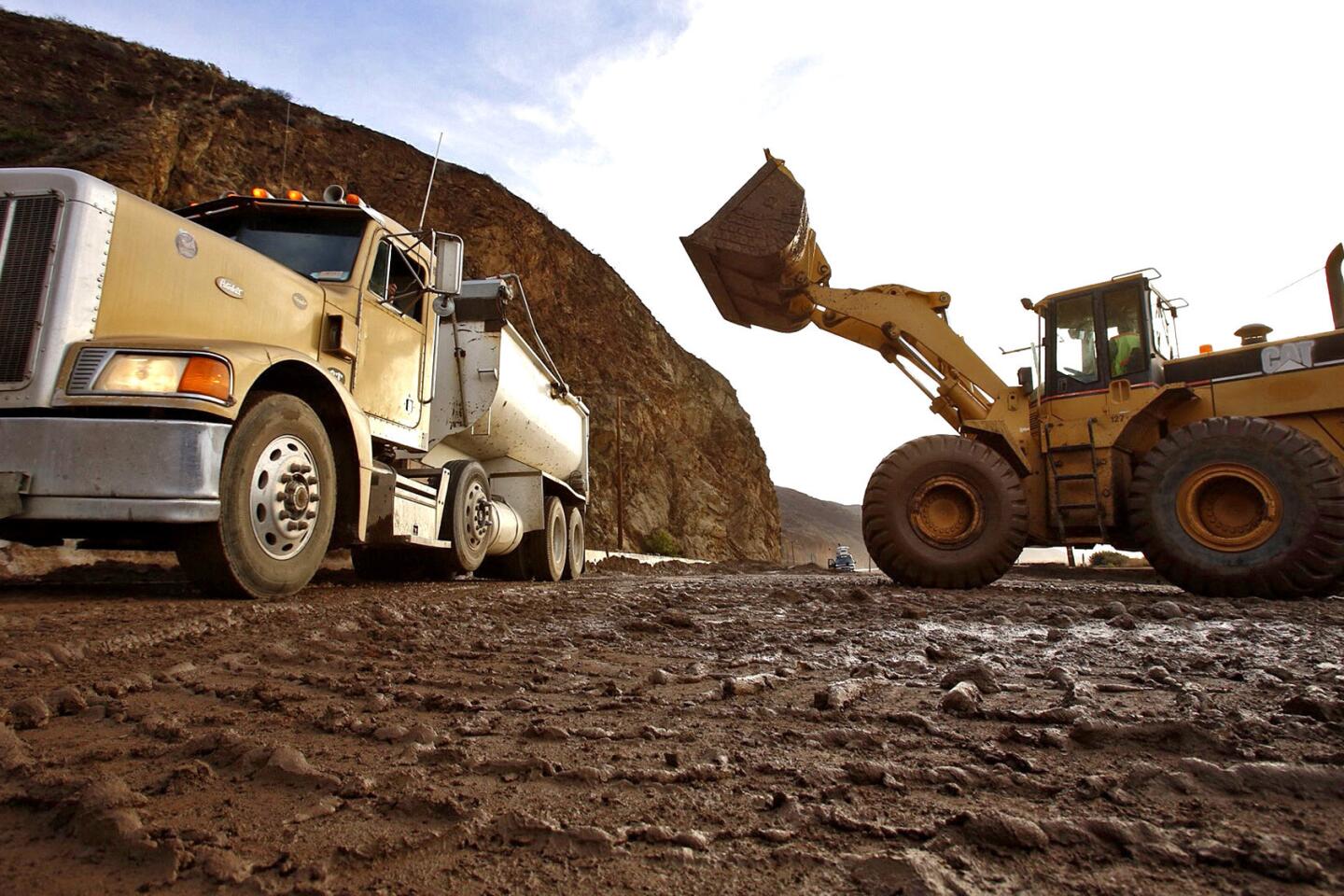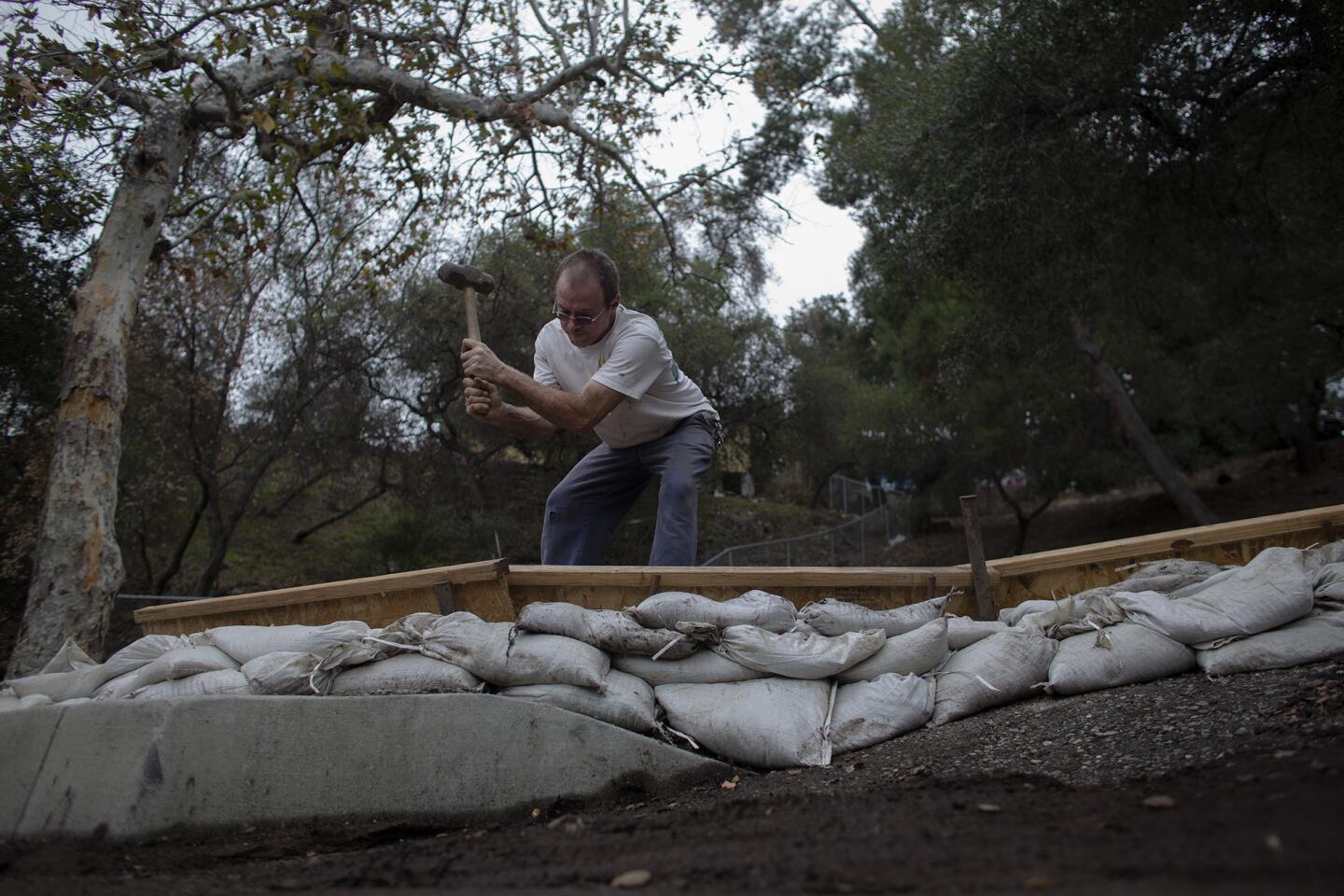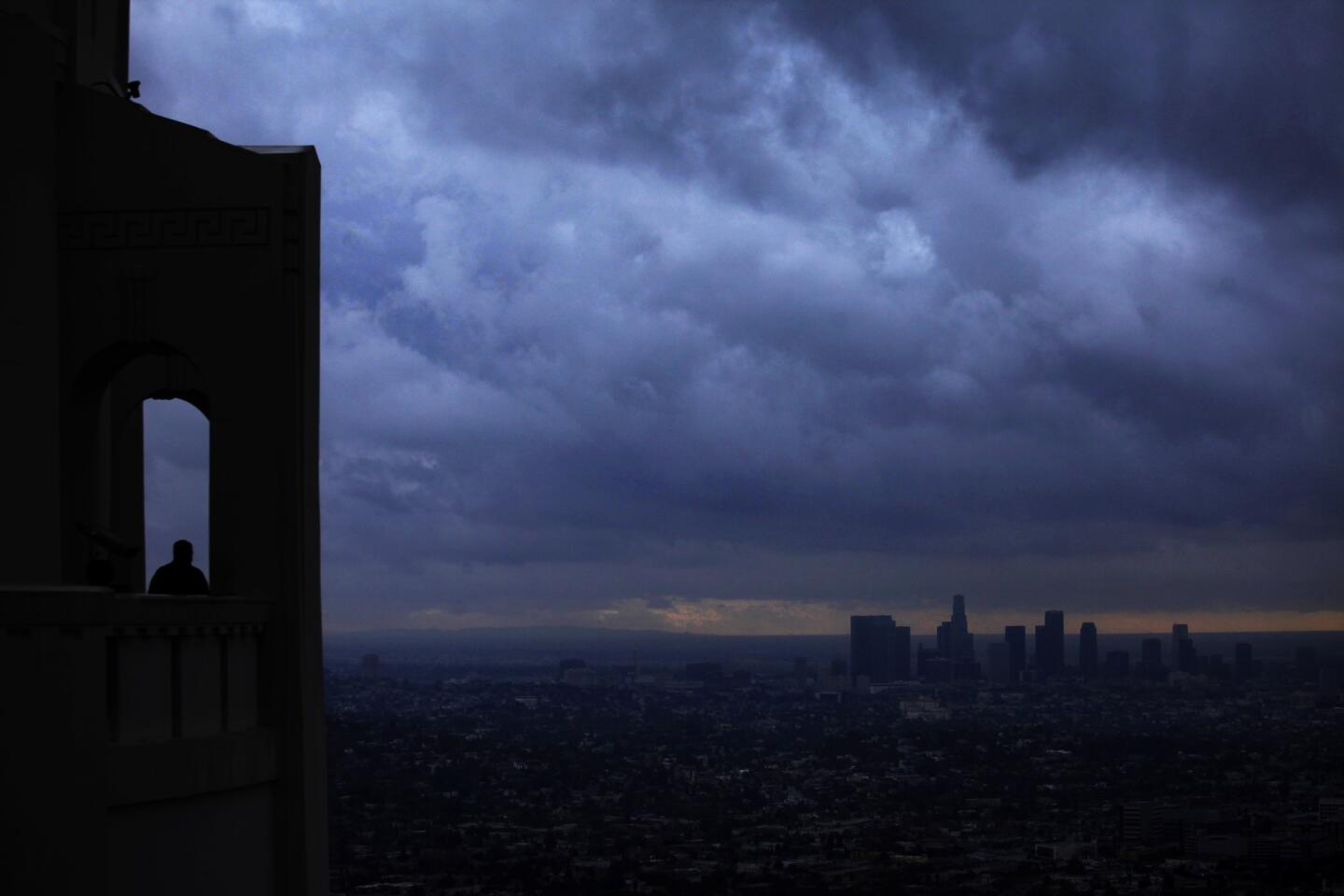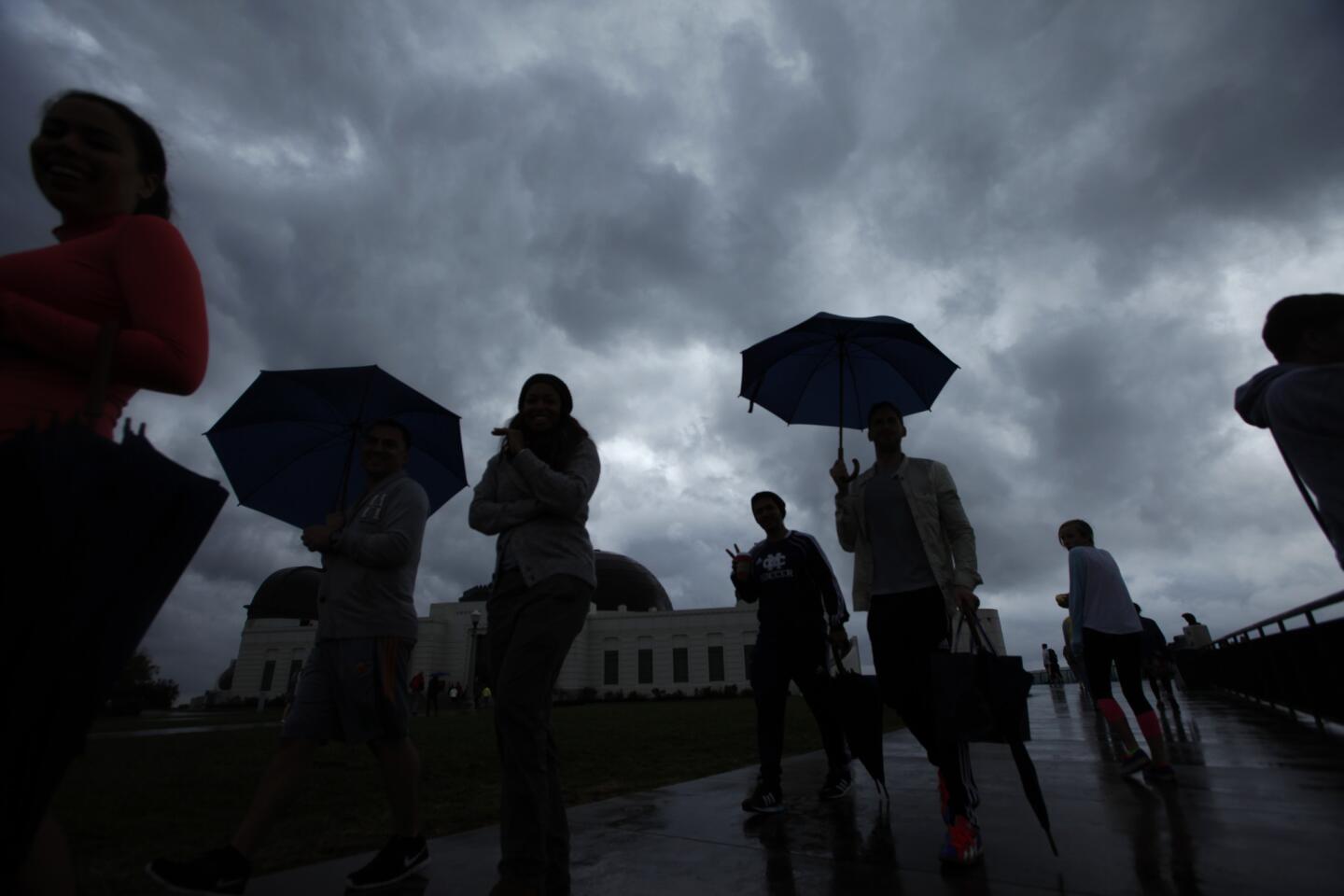California braces for powerful rainstorm; mudslides feared
- Share via
A rain-triggered mudslide that shut down nine miles of Pacific Coast Highway on Sunday could be a preview of what’s potentially to come the rest of the week.
A low-pressure storm poised off the coast on Monday was expected to move inland overnight, hitting the Southland with full force on Tuesday – bringing as much as 5 inches of rain in the mountain areas and 1 to 2 inches in downtown Los Angeles, according to the National Weather Service.
“This looks like the type of storm that has widespread, constant rain,” said David Sweet, a meteorologist with the National Weather Service in Oxnard. “It’s very large and has a lot of moisture with it.”
While this weekend’s rain brought cheers in the drought-stricken region, the possibility of a bigger storm on Tuesday also brought anxiety for the residents of foothill communities below the burn areas of recent wildfires – where blackened, bare hillsides have little vegetation left to hold the hillside in place.
The rock and mudslide on PCH, which left tons of debris on the roadway in southern Ventura County, was in an area heavily affected by the 2013 Springs fire, Caltrans spokesman Patrick Chandler said.
After the fire, crews set up K-rail concrete barriers next to the highway to prepare for future mudslides from the denuded adjacent hillside. On Sunday afternoon, mud and rock spilled over the top of the barriers and onto the highway, Chandler said.
The highway will remain closed between Yerba Buena Road and Las Posas Road for at least several days as crews clean up the mess and wait for the storm to pass, according to Caltrans.
Rainfall is expected to gain intensity throughout the day and evening Tuesday before “tapering off to showers after midnight,” Sweet said. The storm could be accompanied by wind gusts of more than 50 mph in the mountains, and showers could linger into Wednesday.
The storm would not be so potentially destructive if not for previous wildfires and the weekend deluge that saturated the ground.
“The problem is it’s only two days after we’ve had a pretty good storm,” said National Weather Service Meteorologist Kathy Hoxsie. “When you don’t give the soil a chance to dry out, we’re expecting it could be a very notable impact.”
More to Read
Sign up for Essential California
The most important California stories and recommendations in your inbox every morning.
You may occasionally receive promotional content from the Los Angeles Times.
